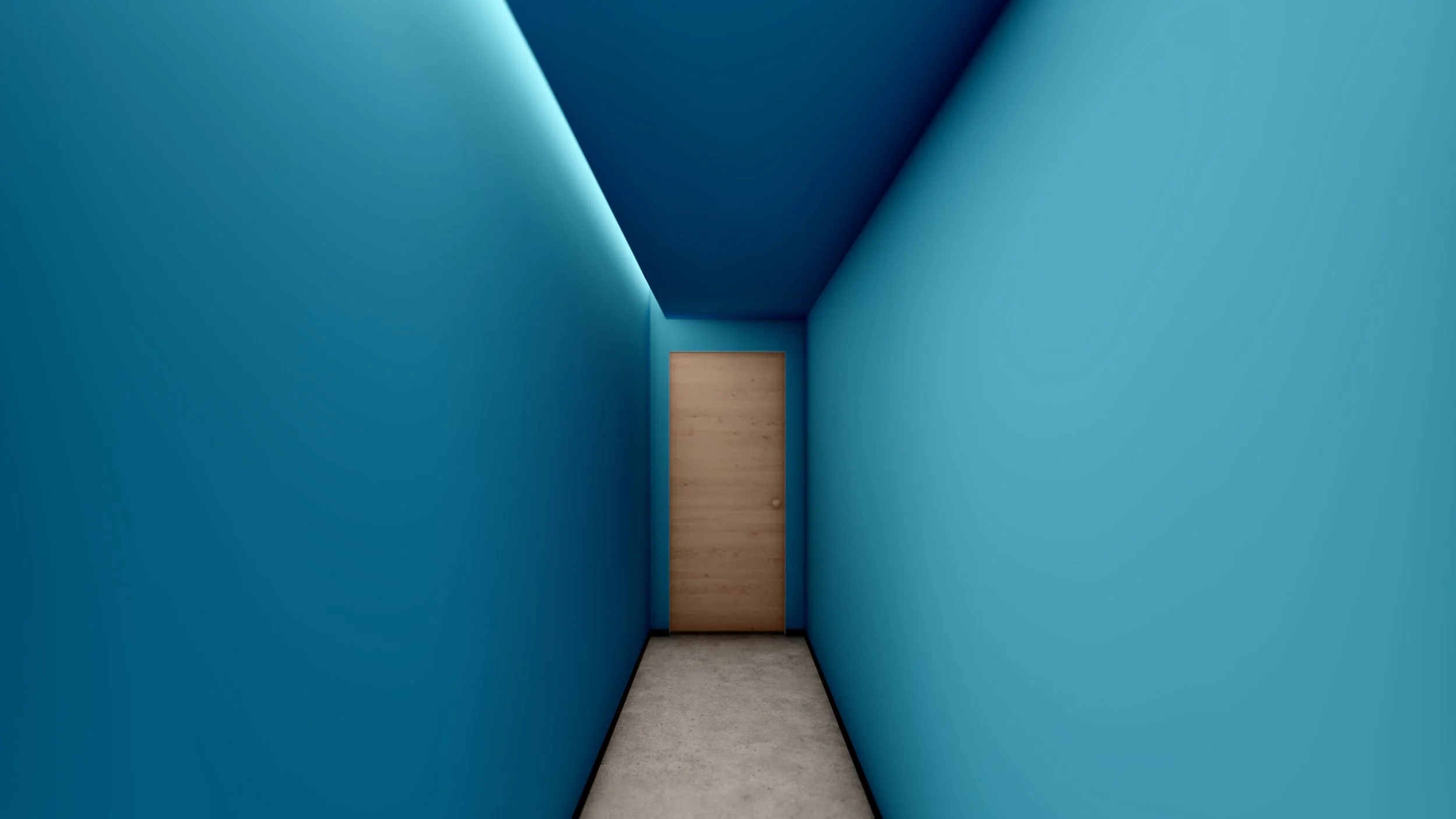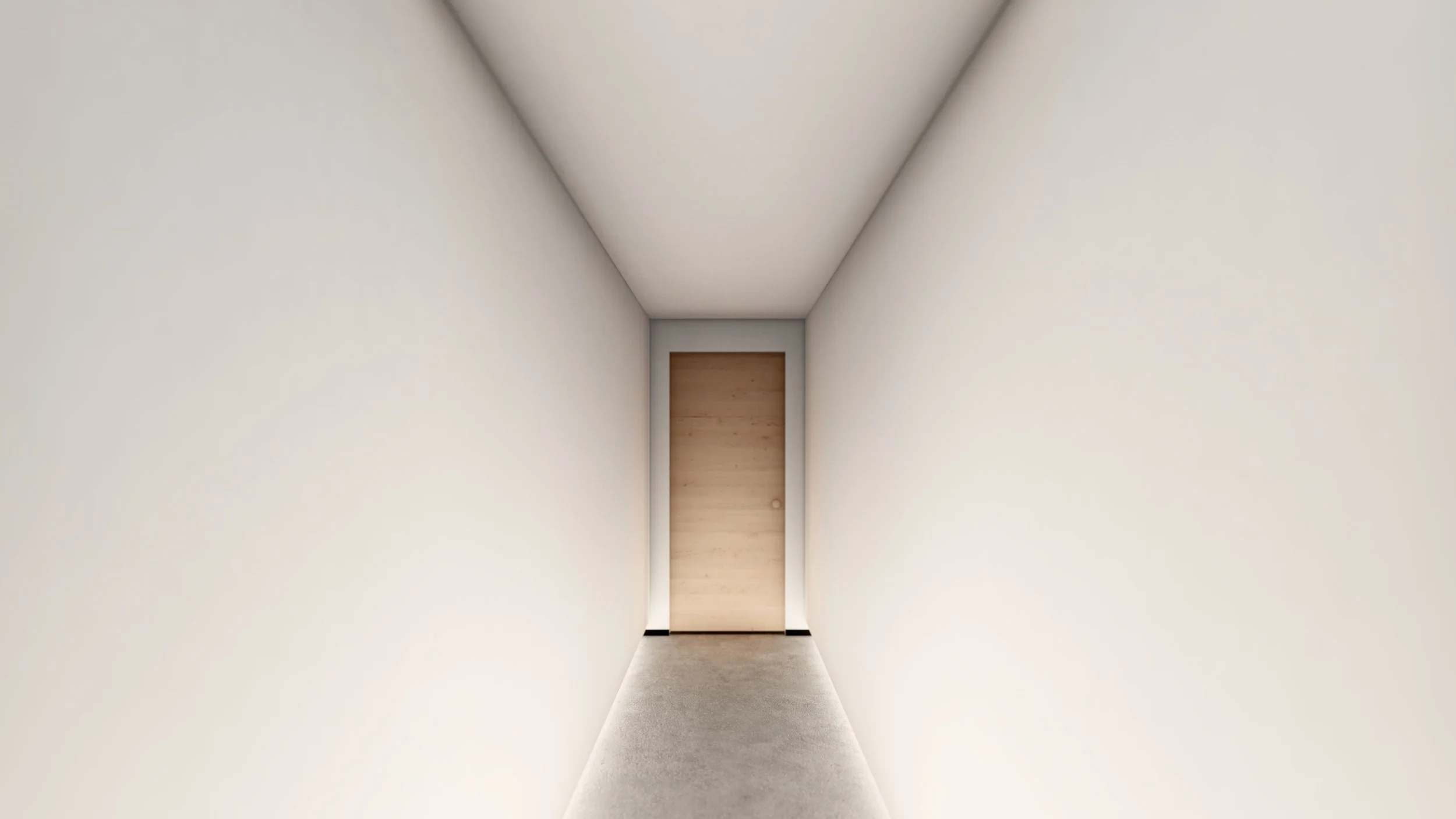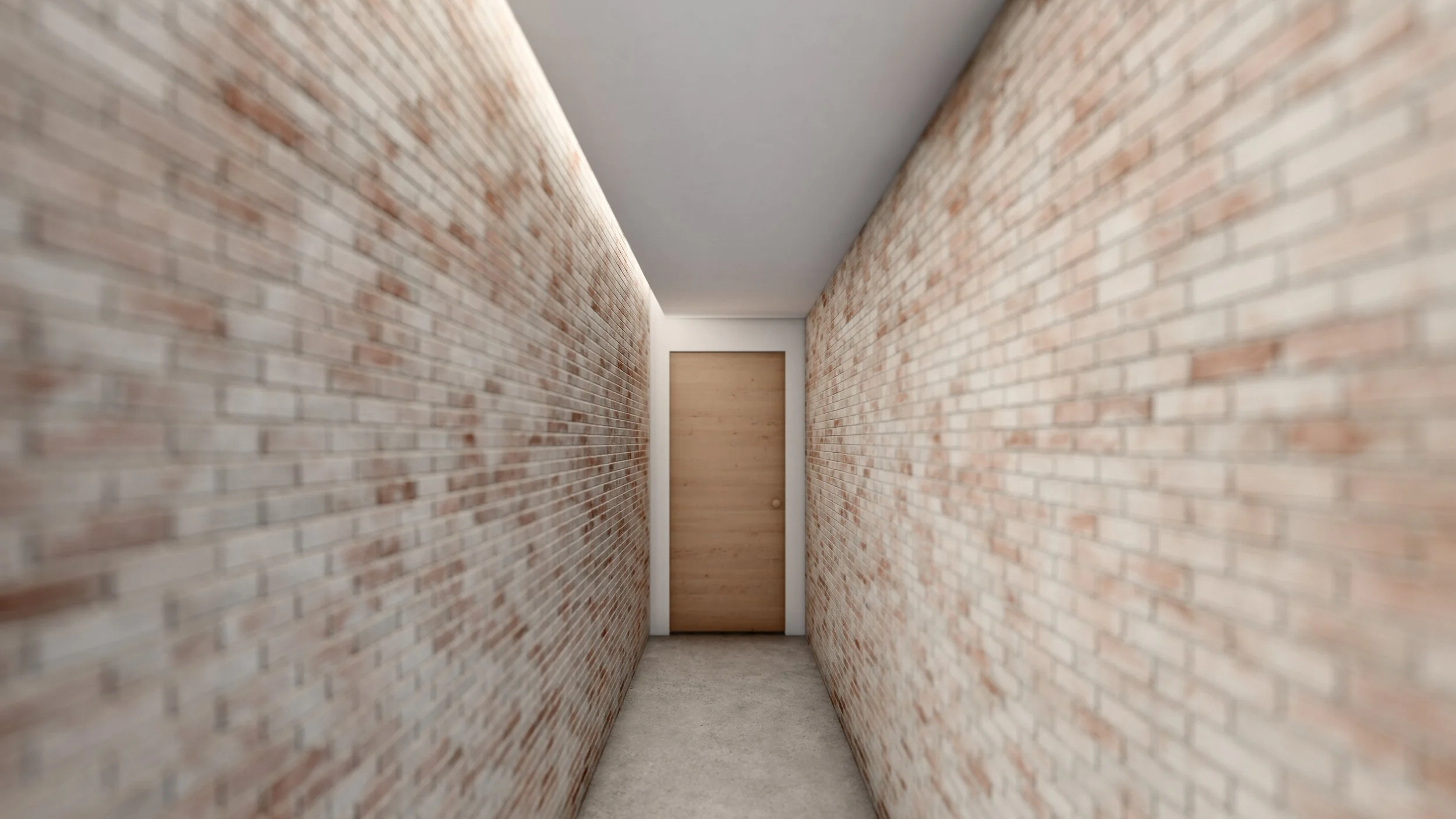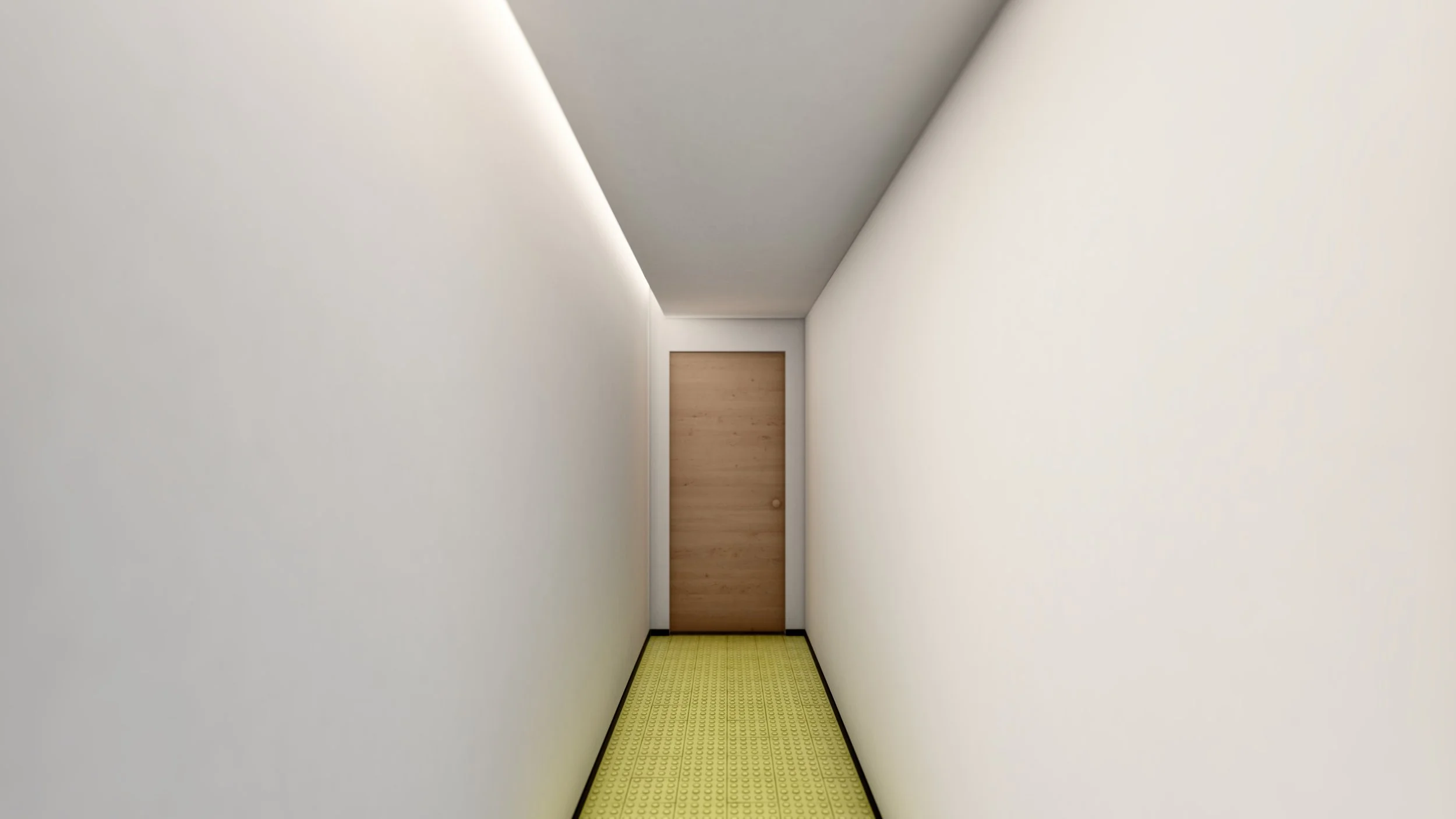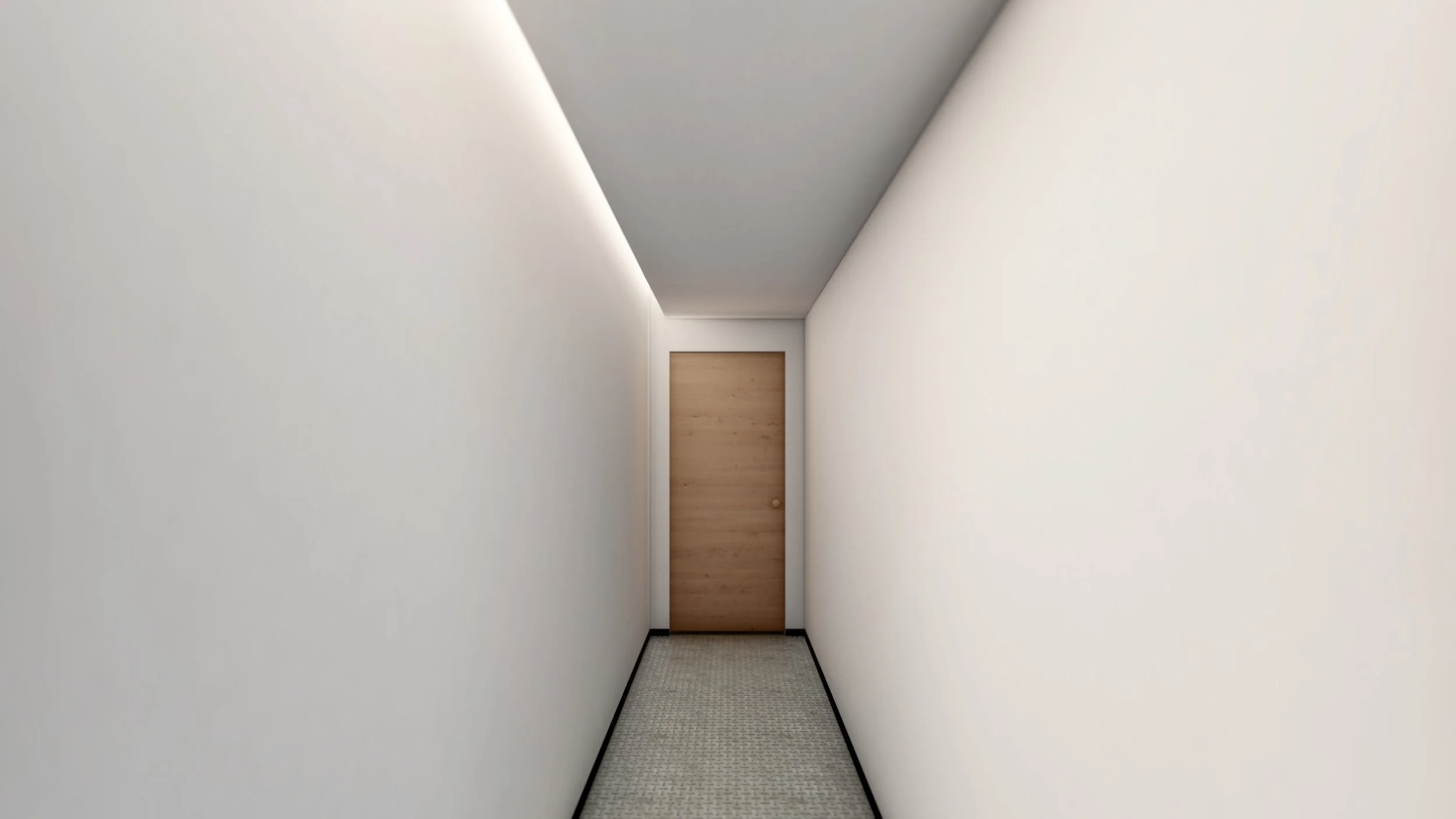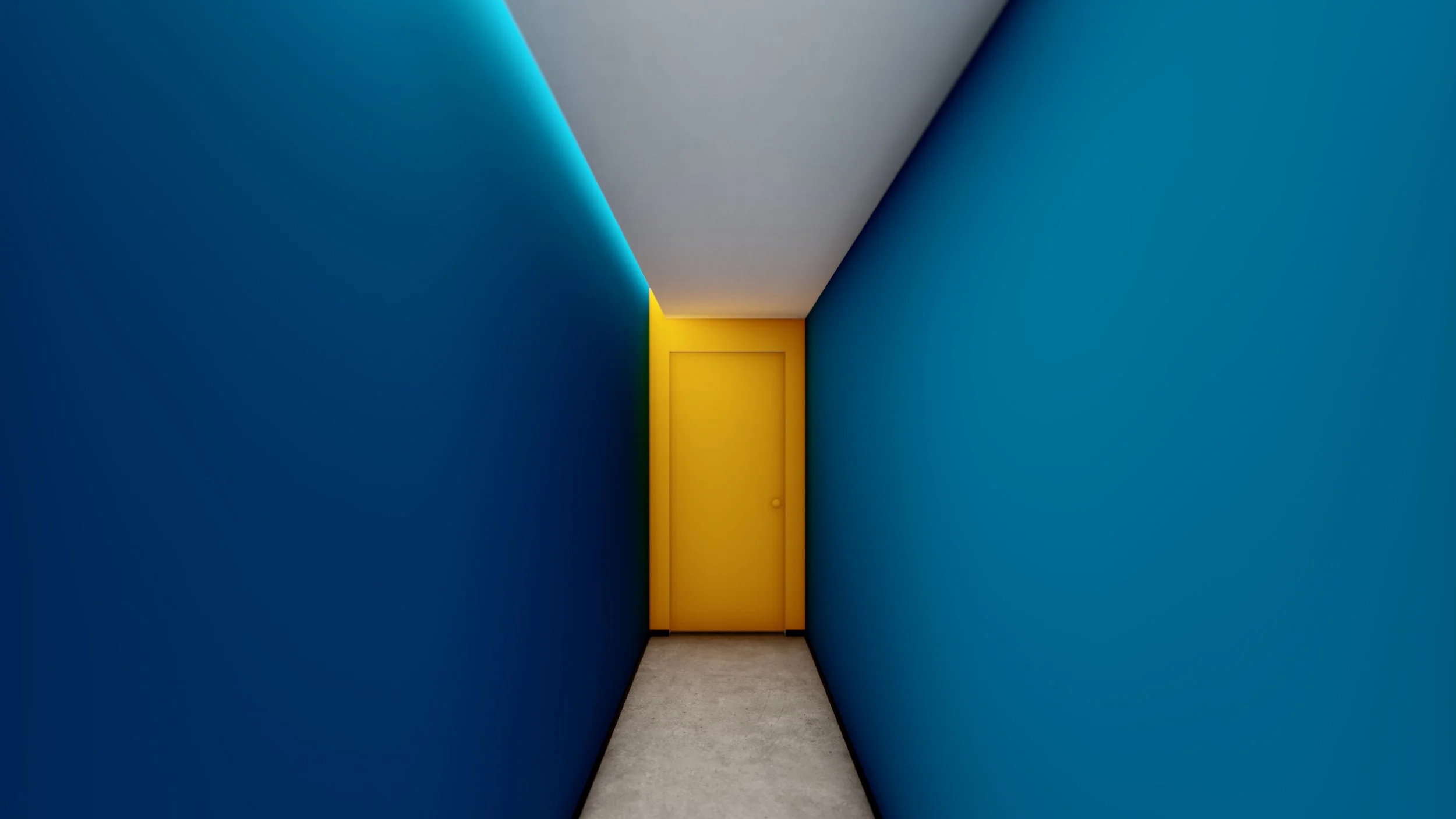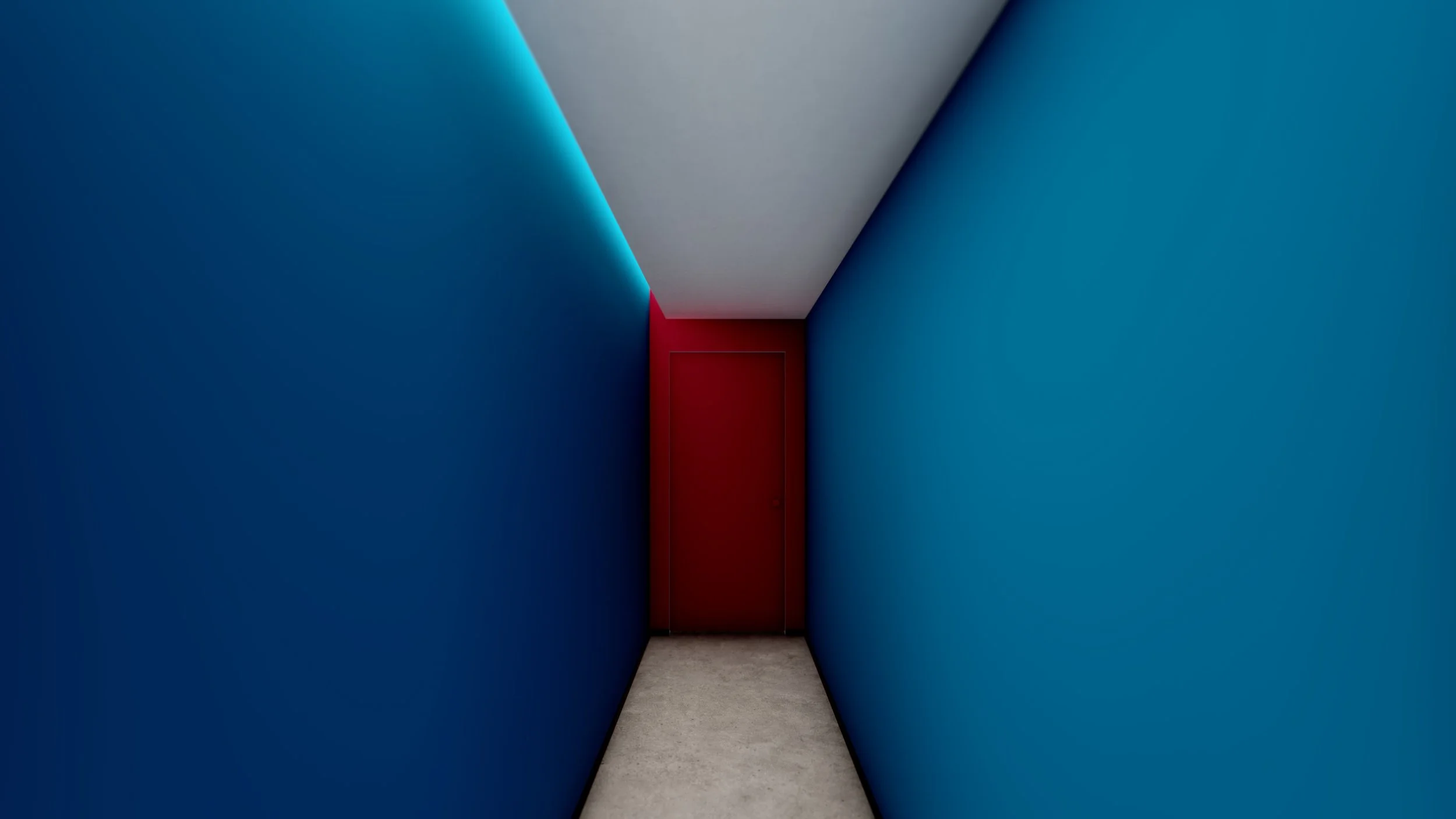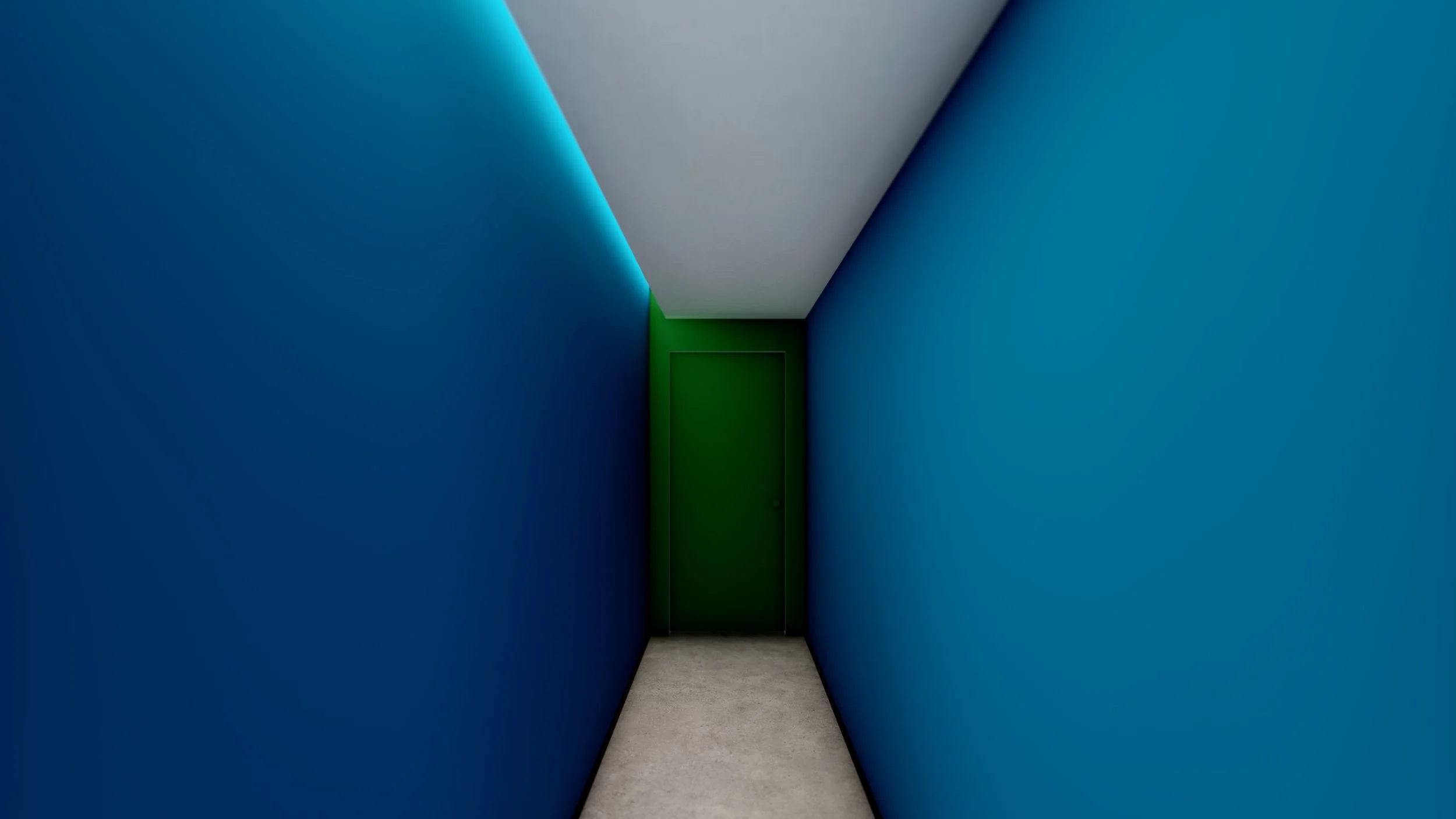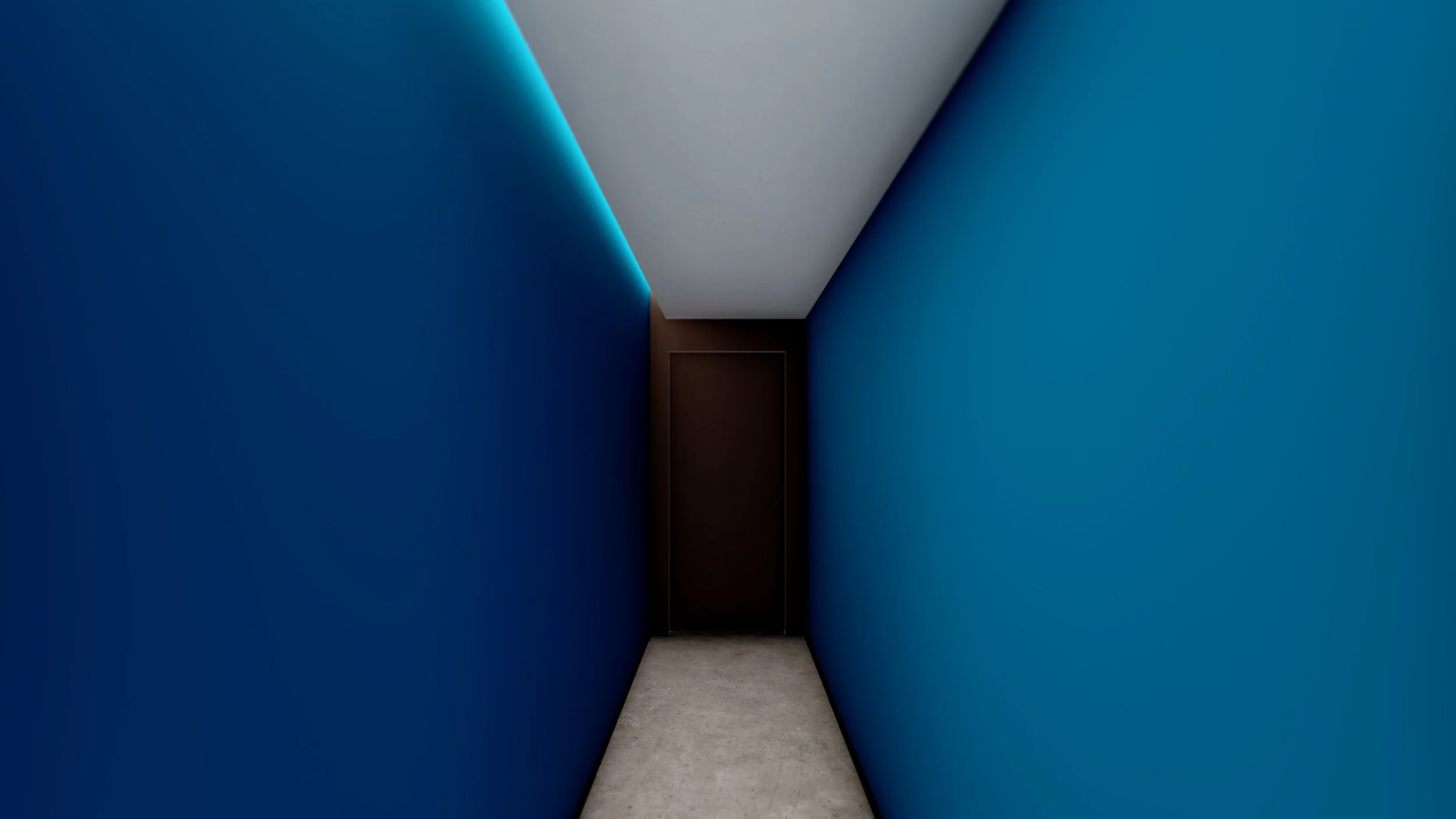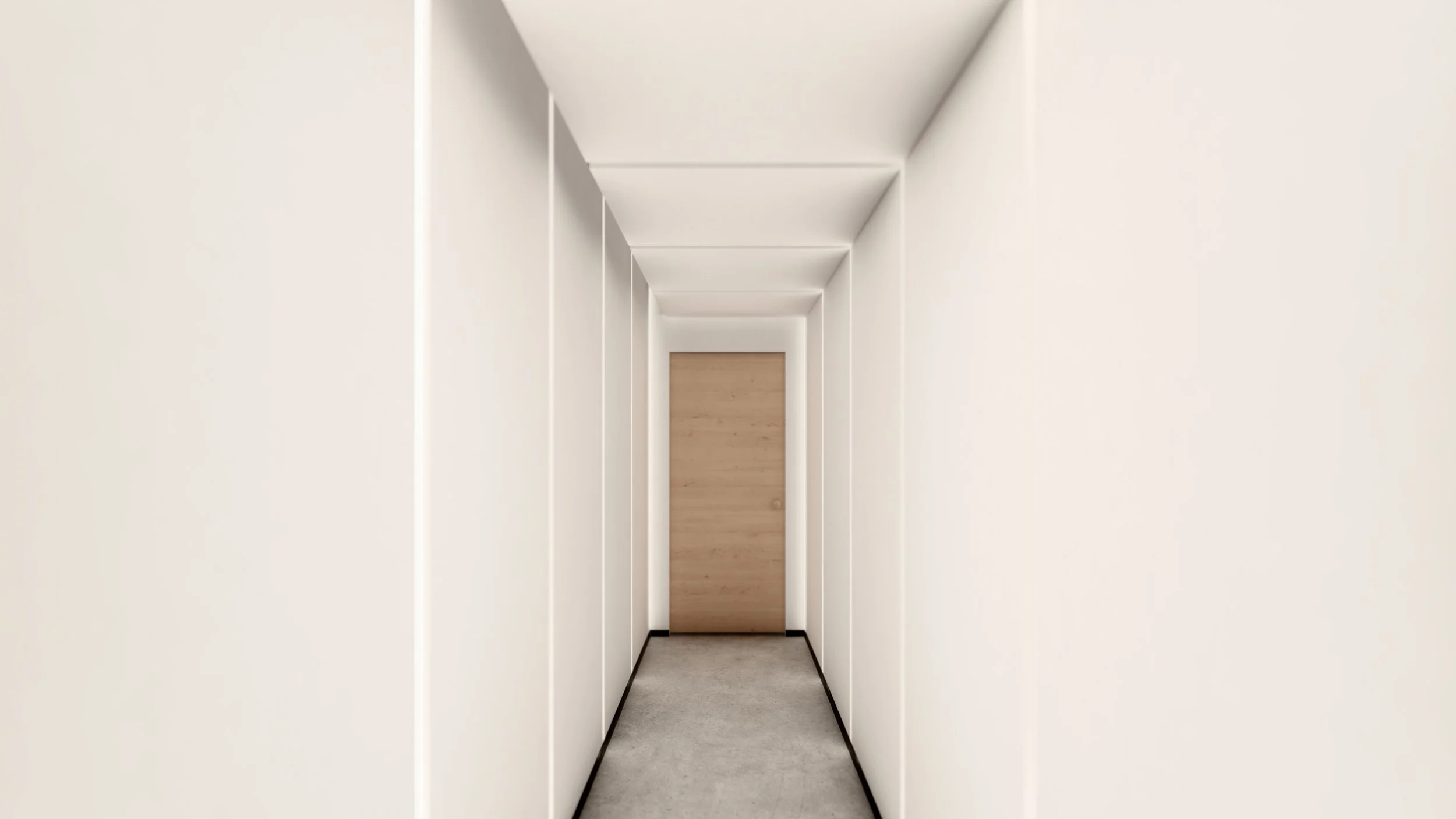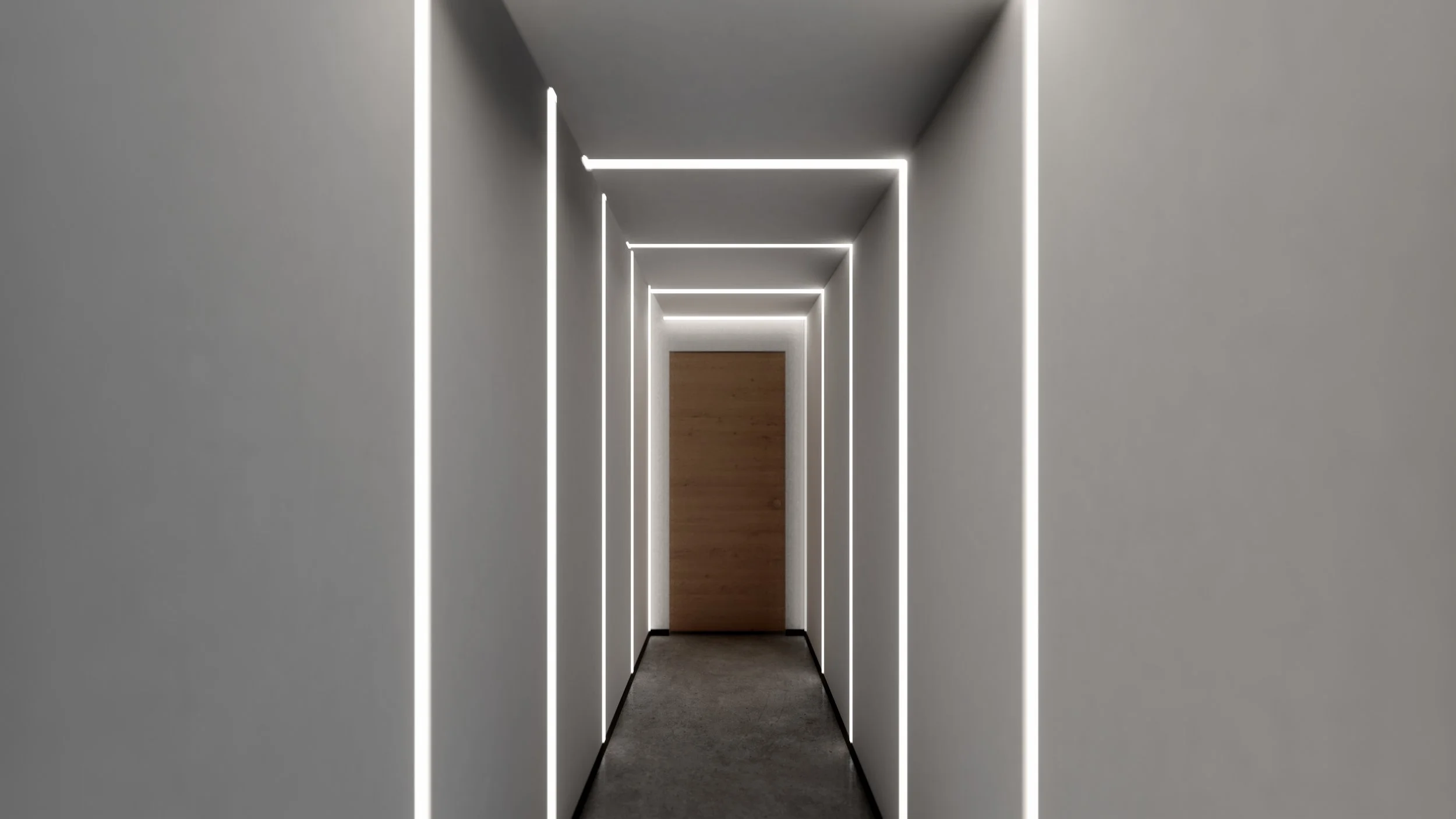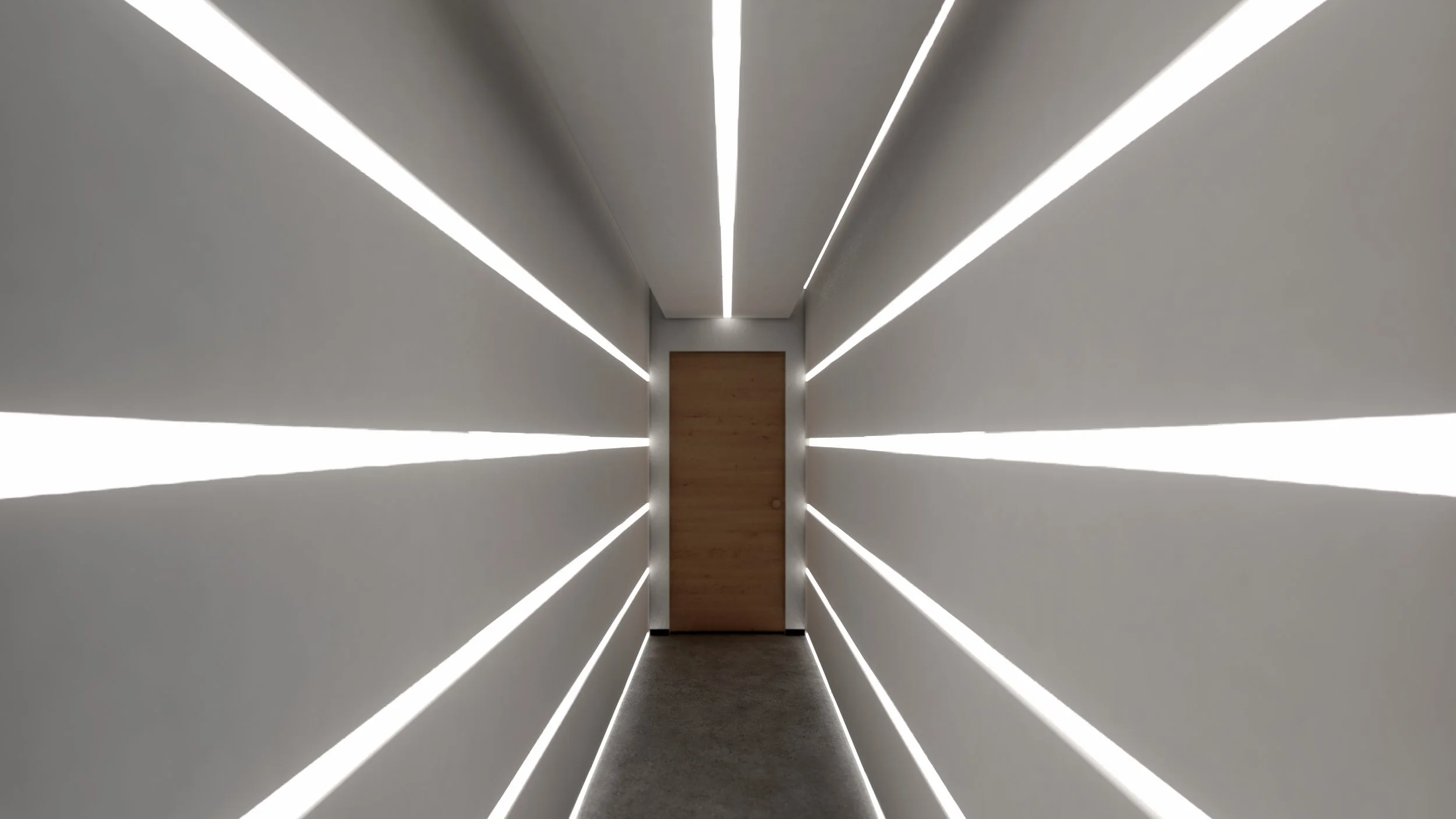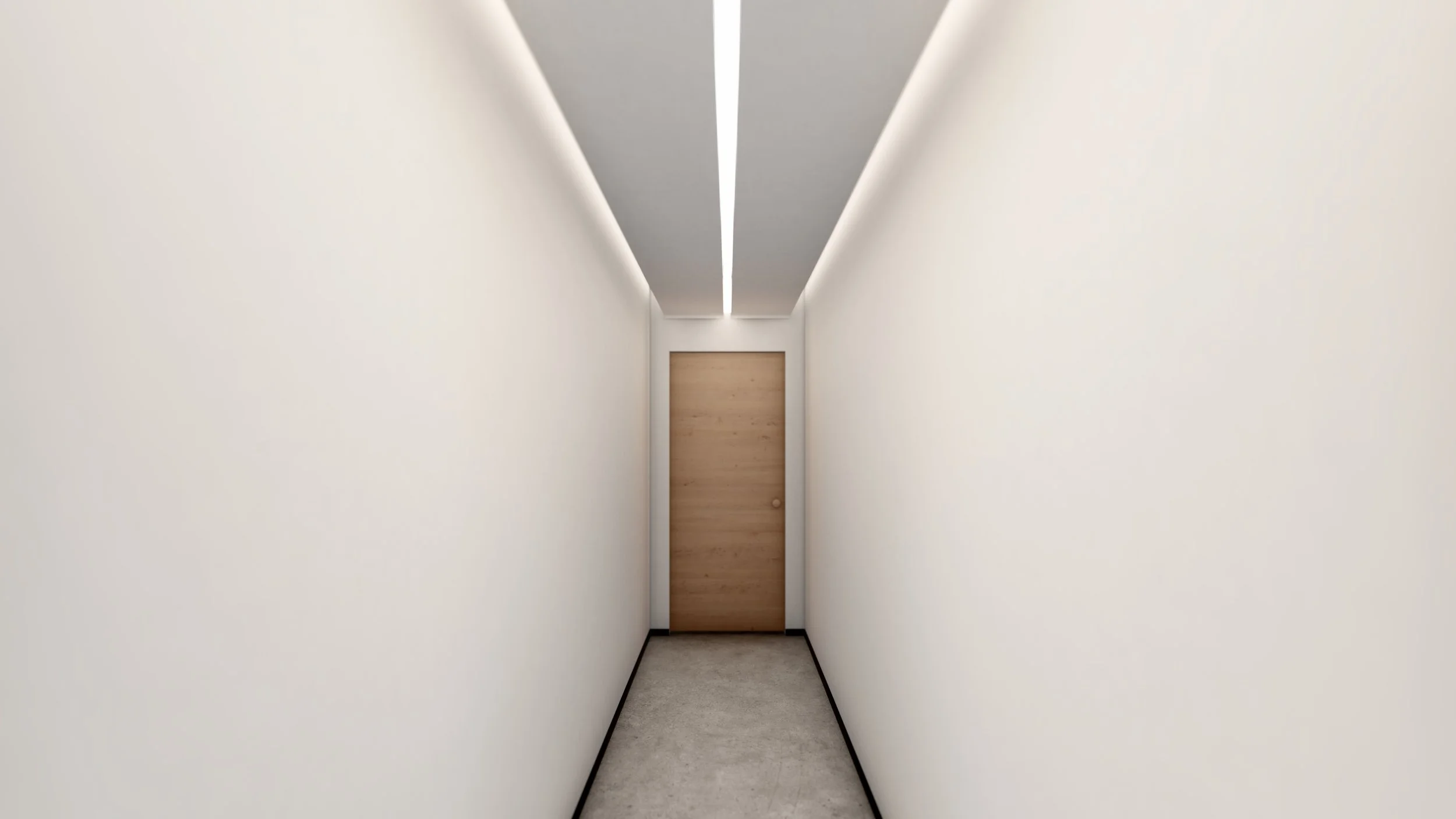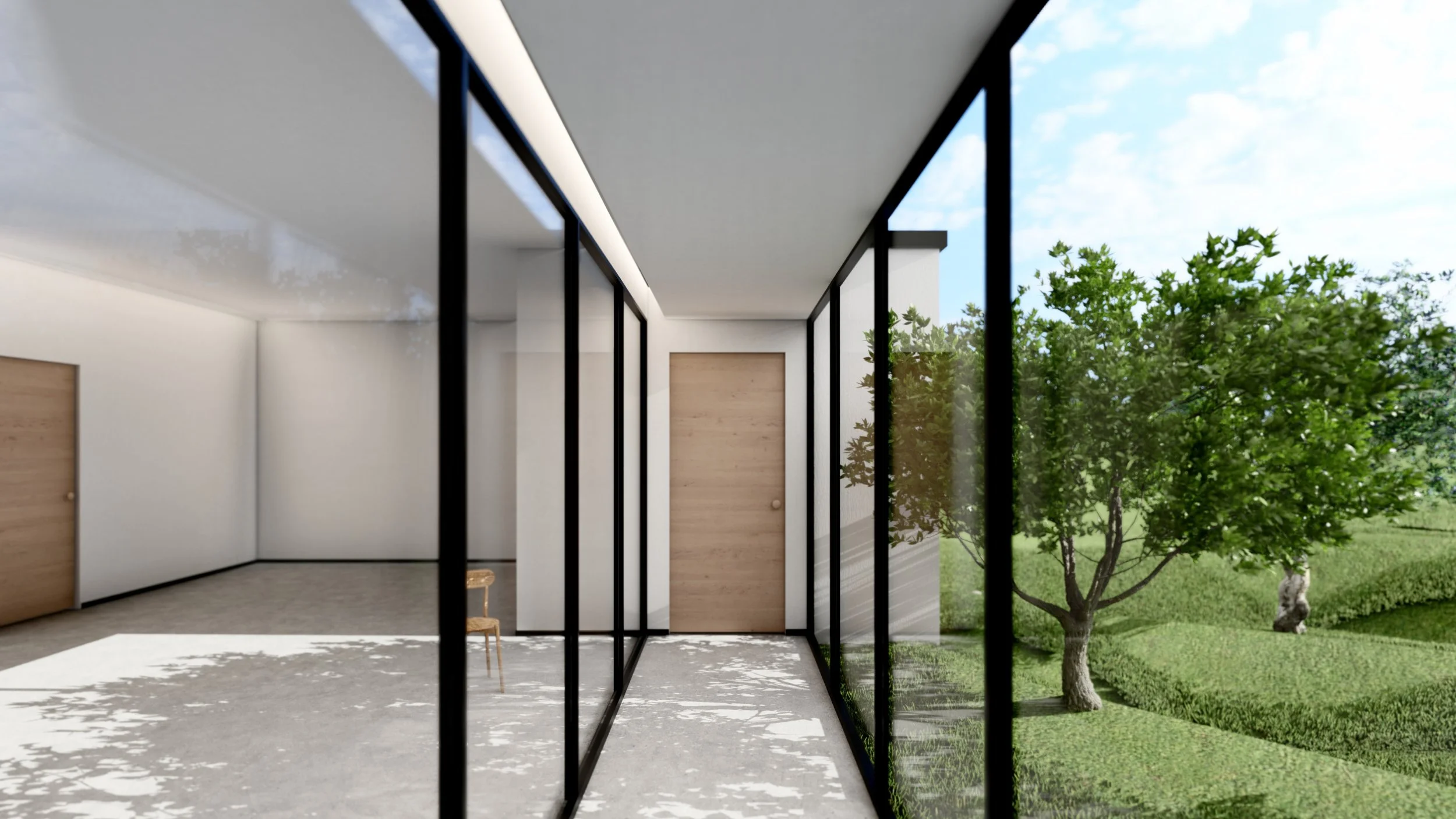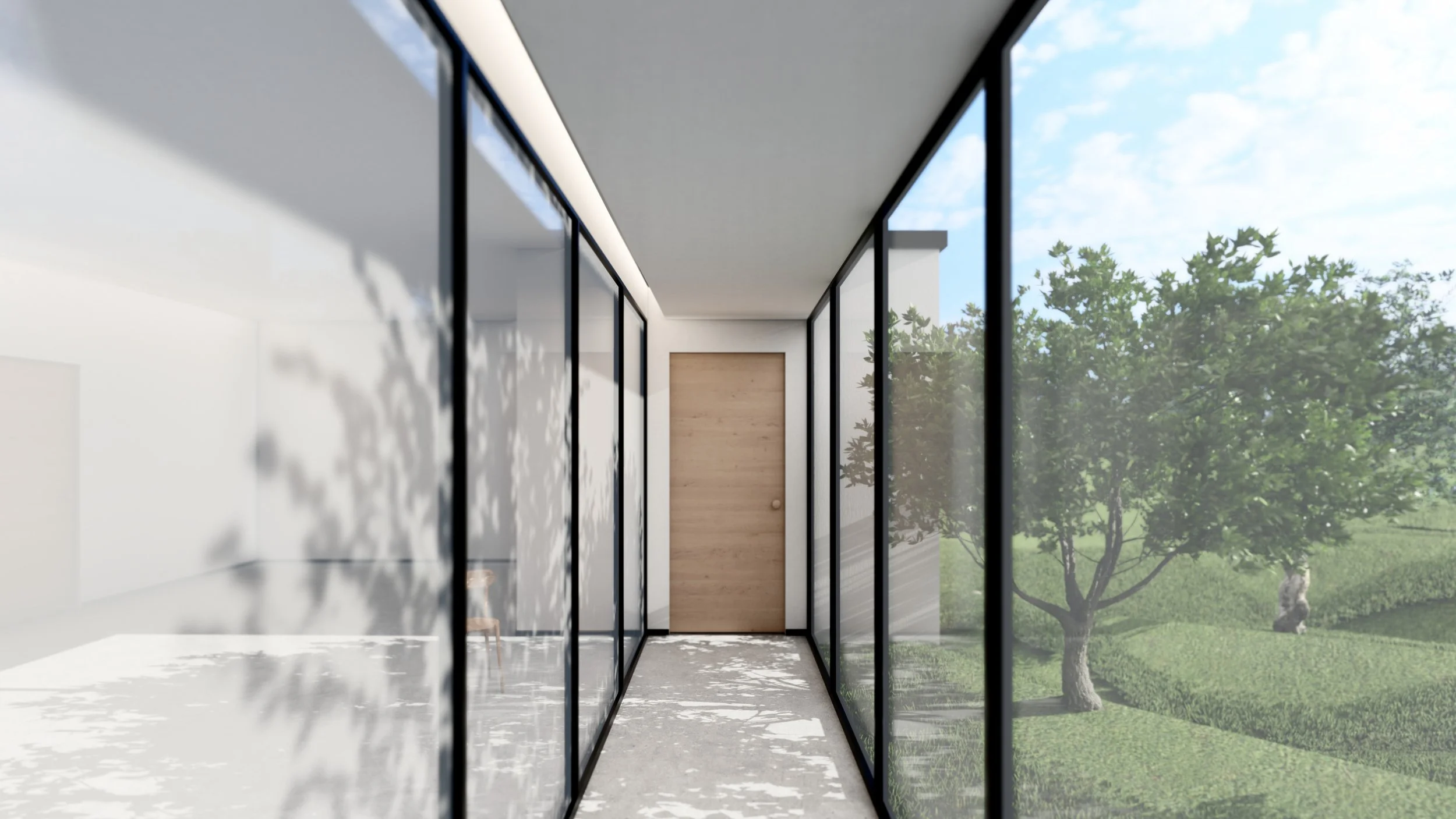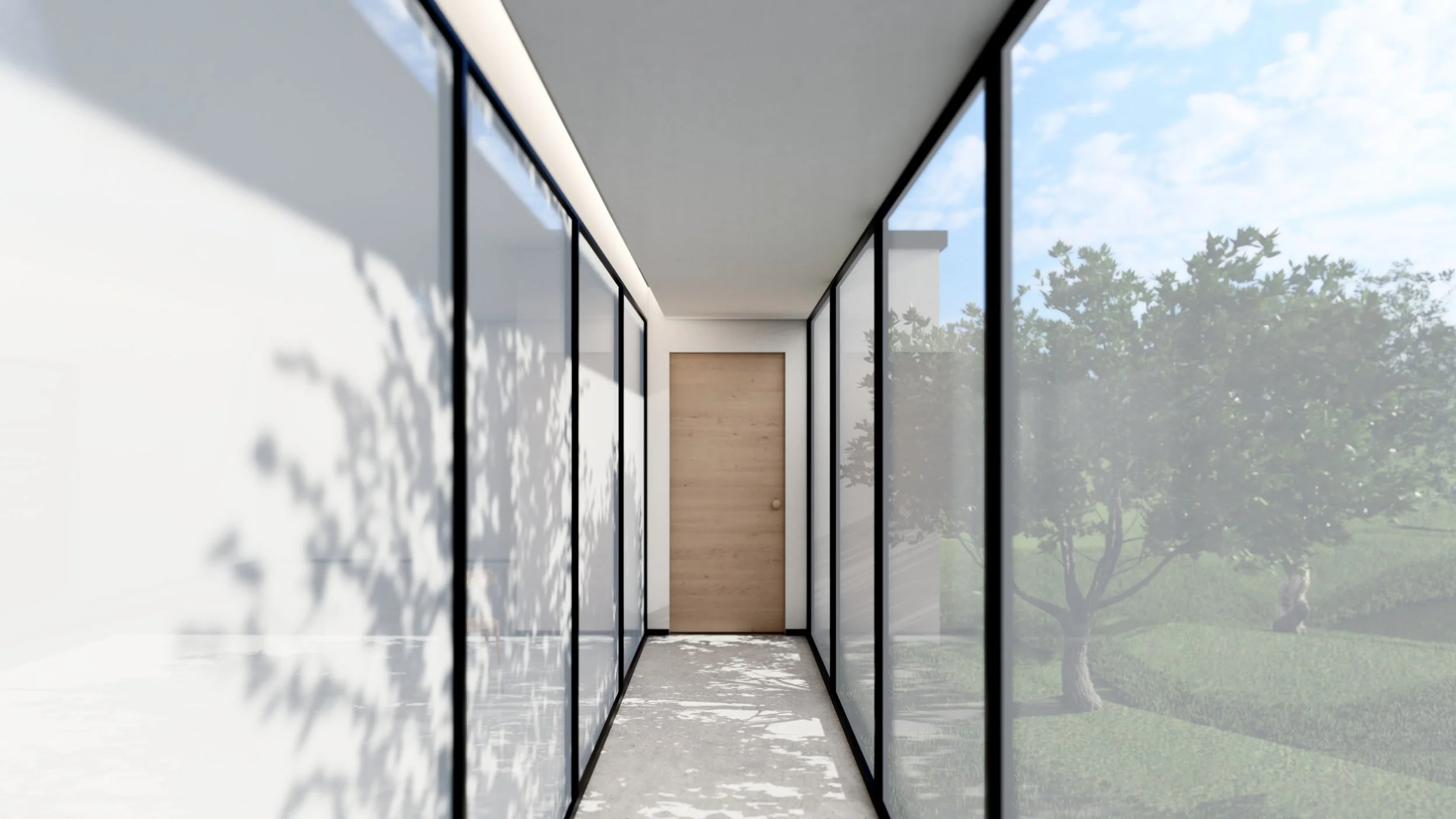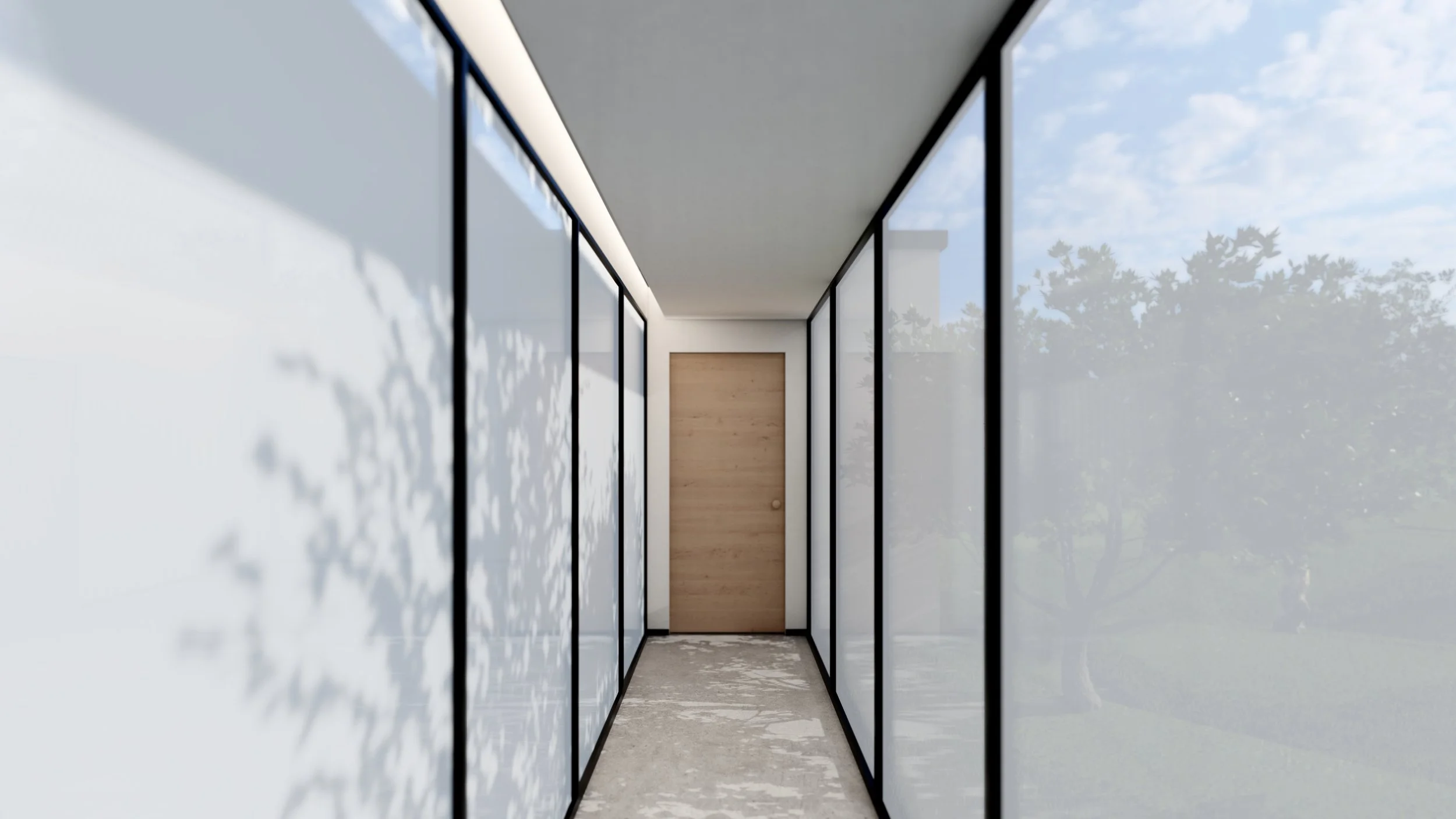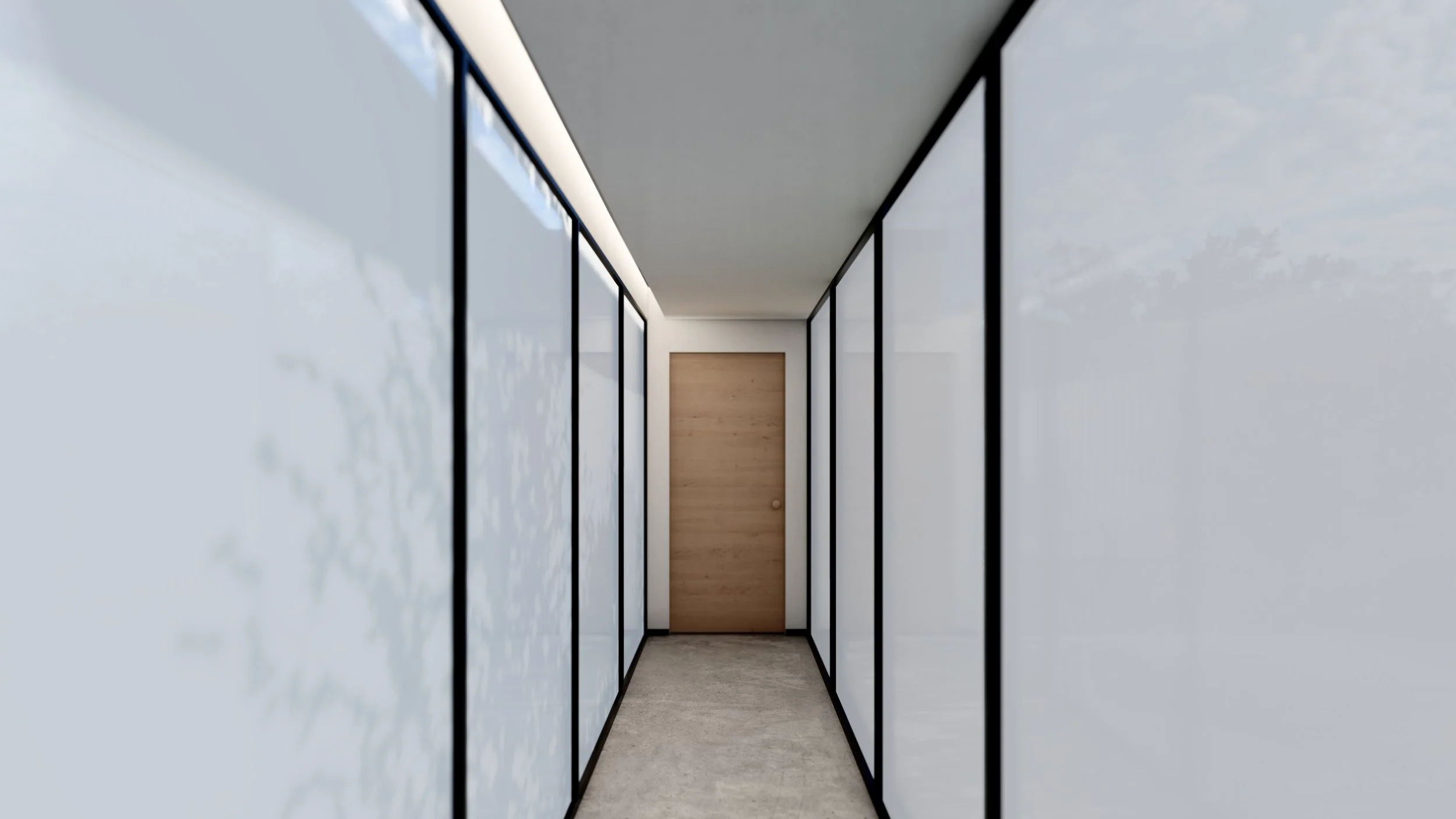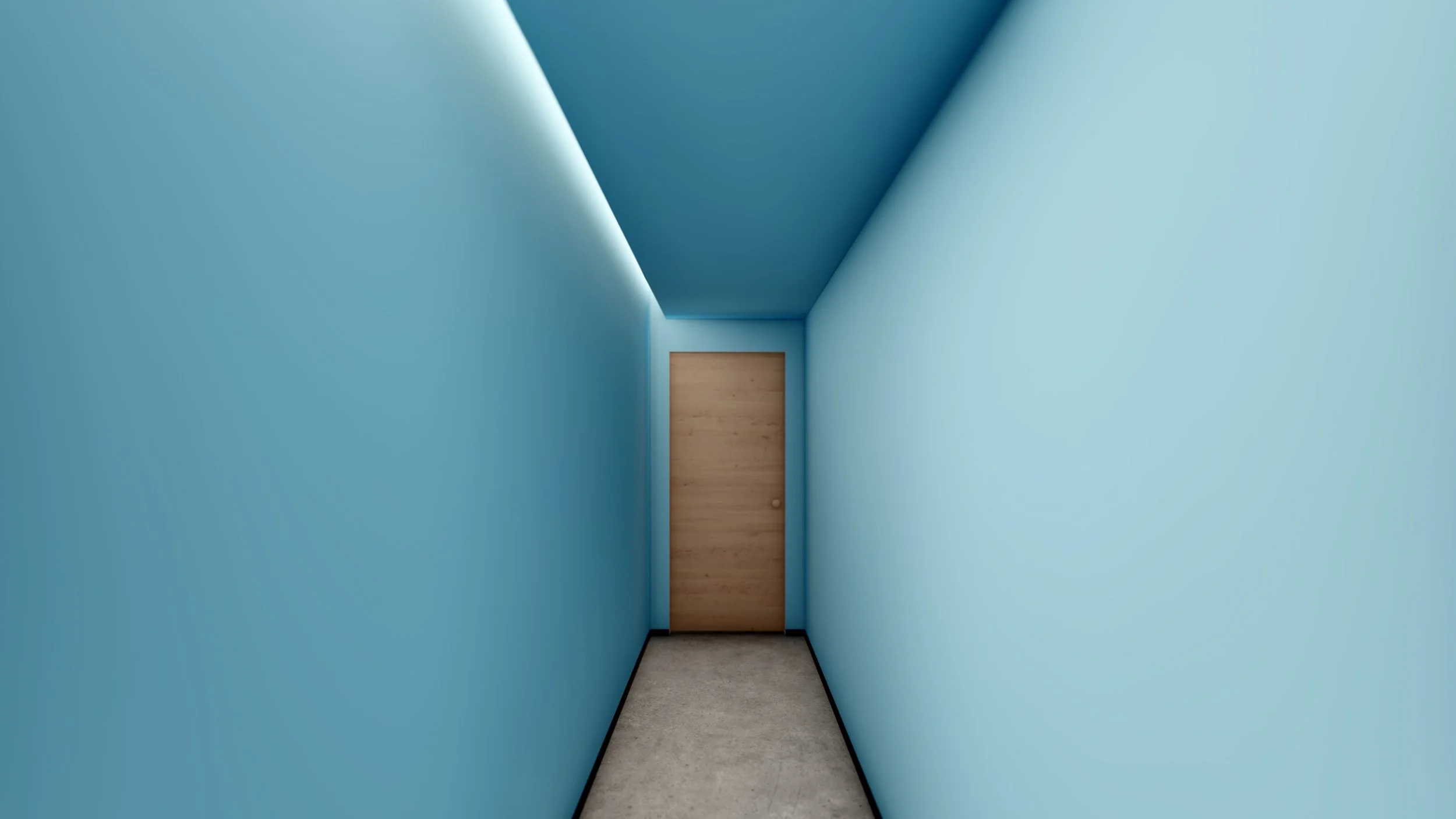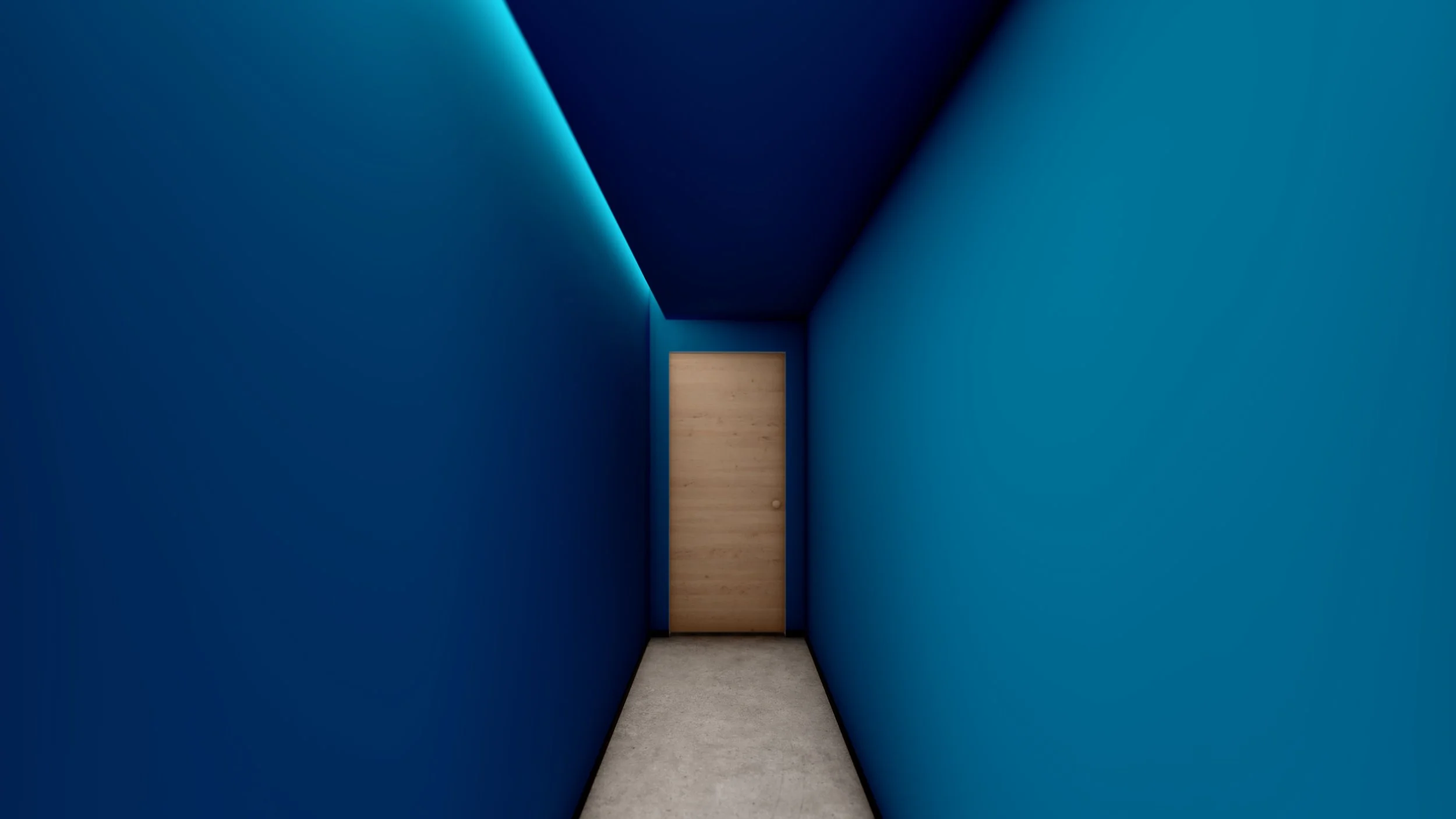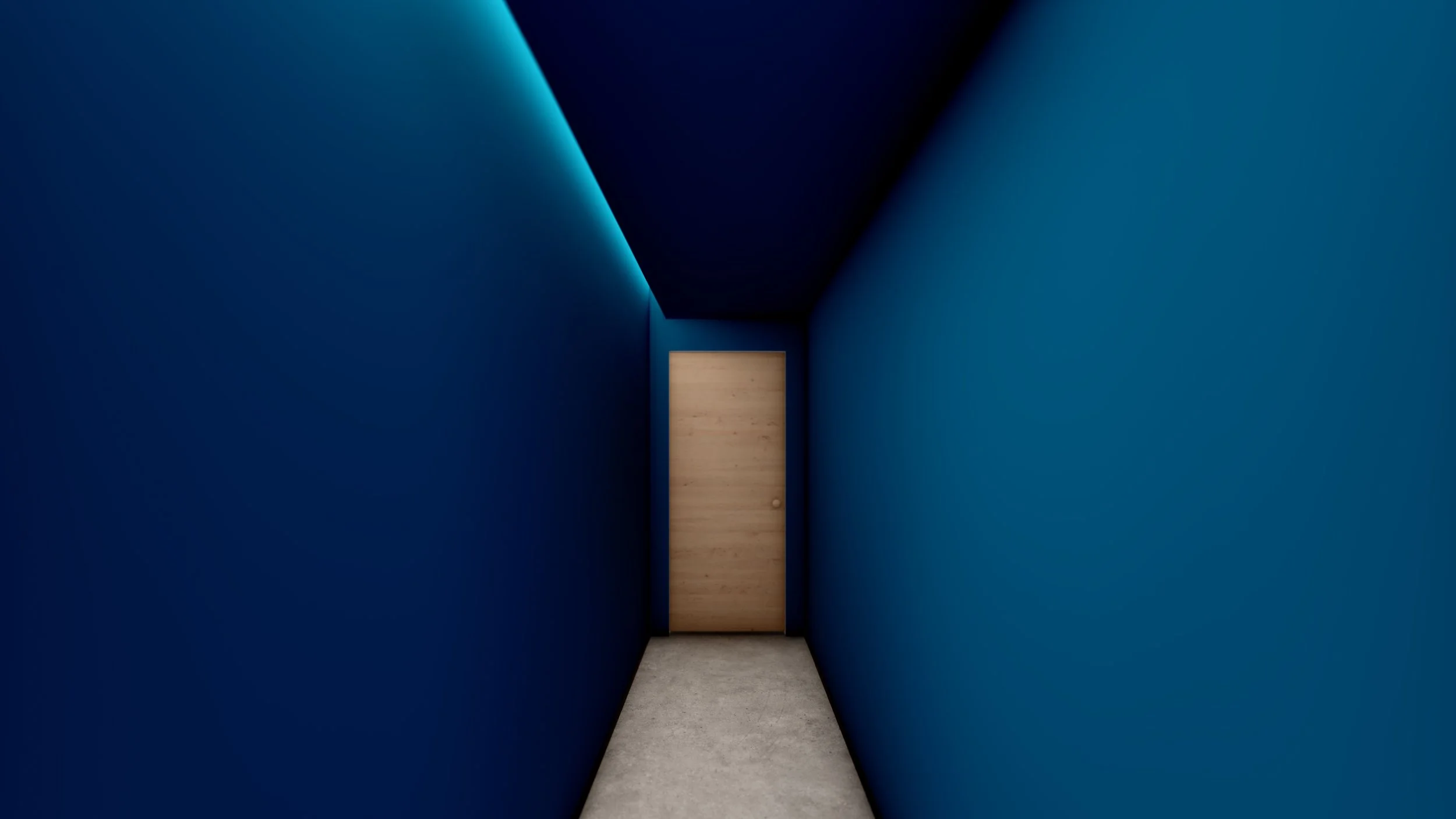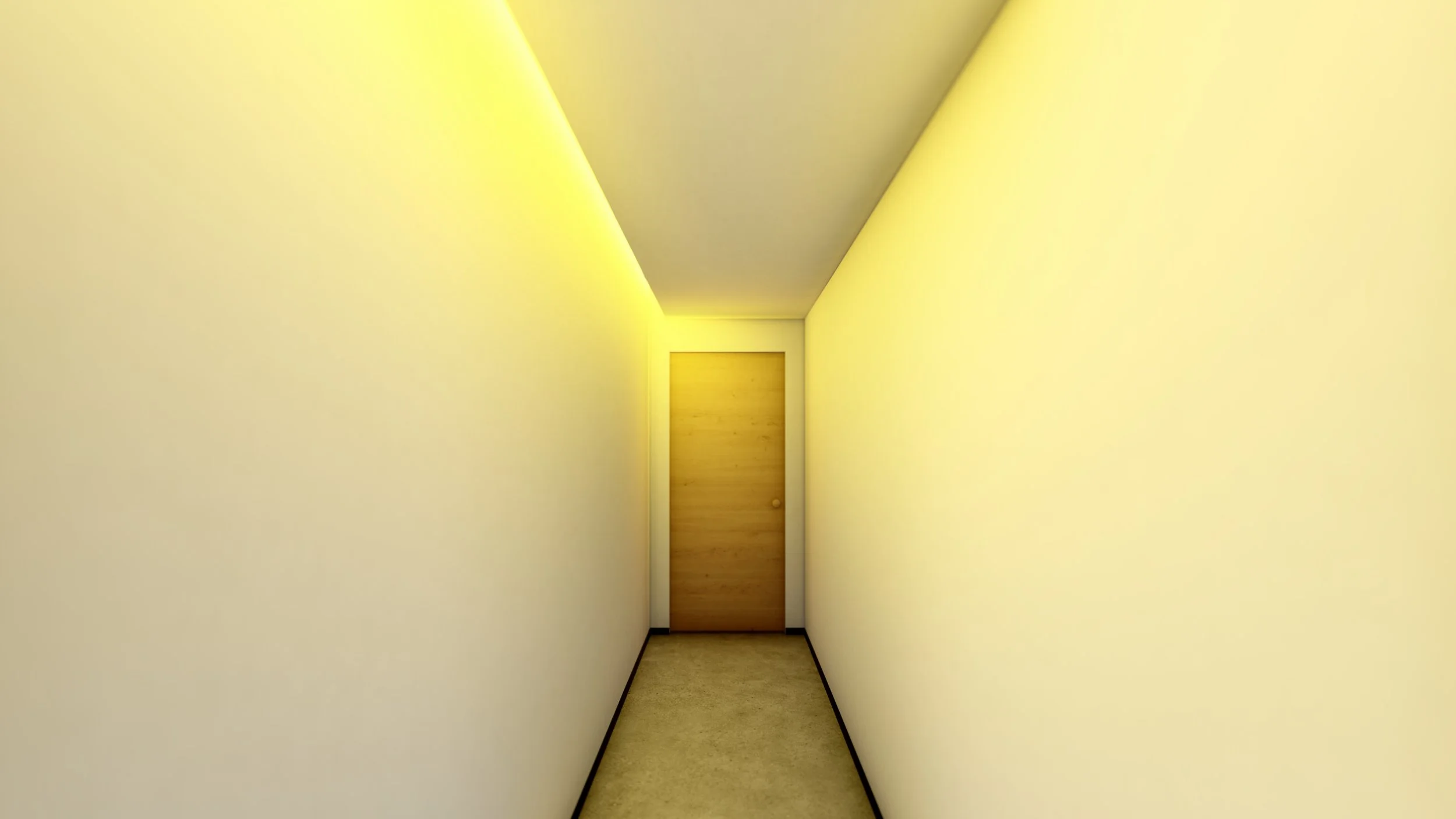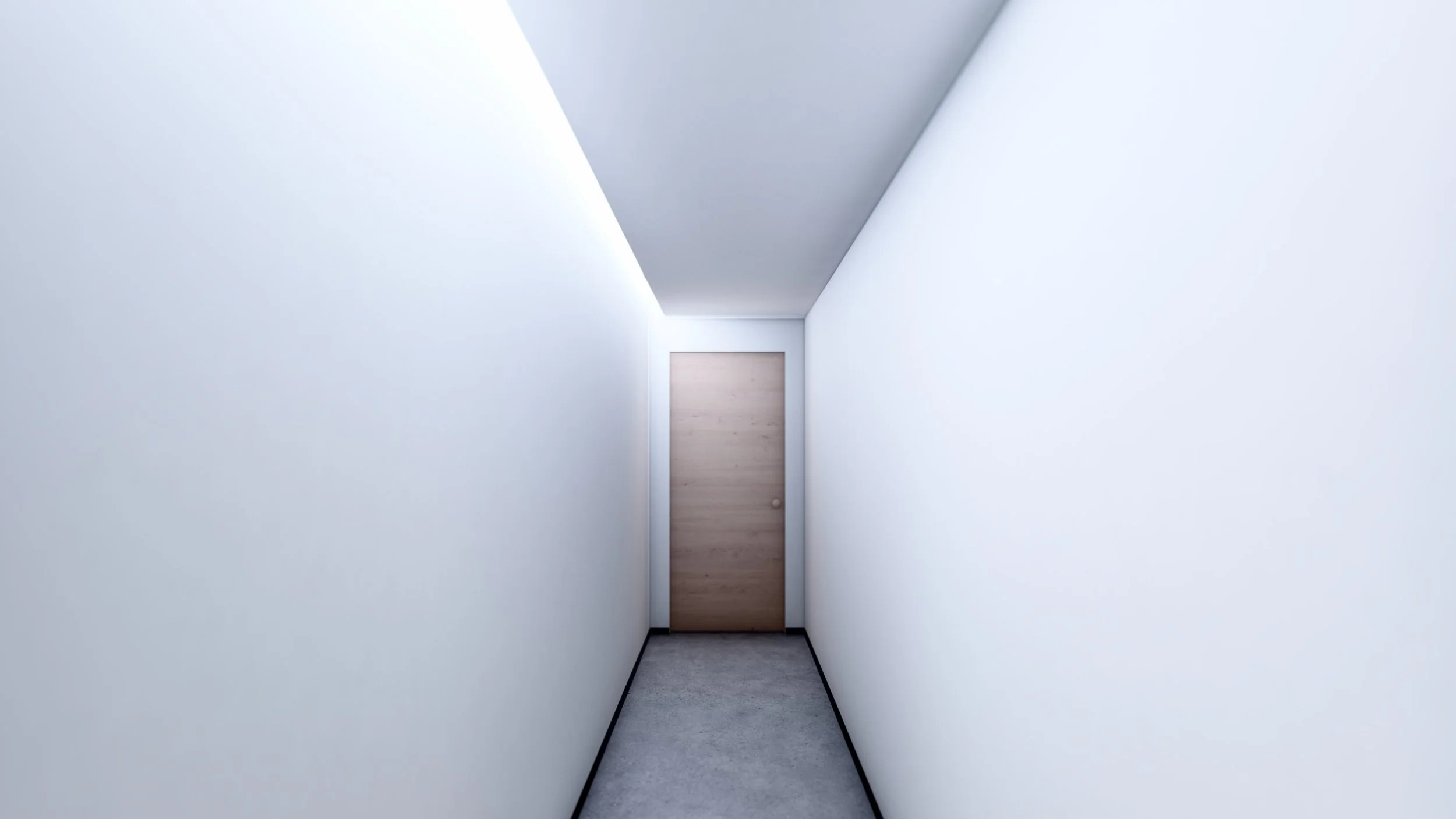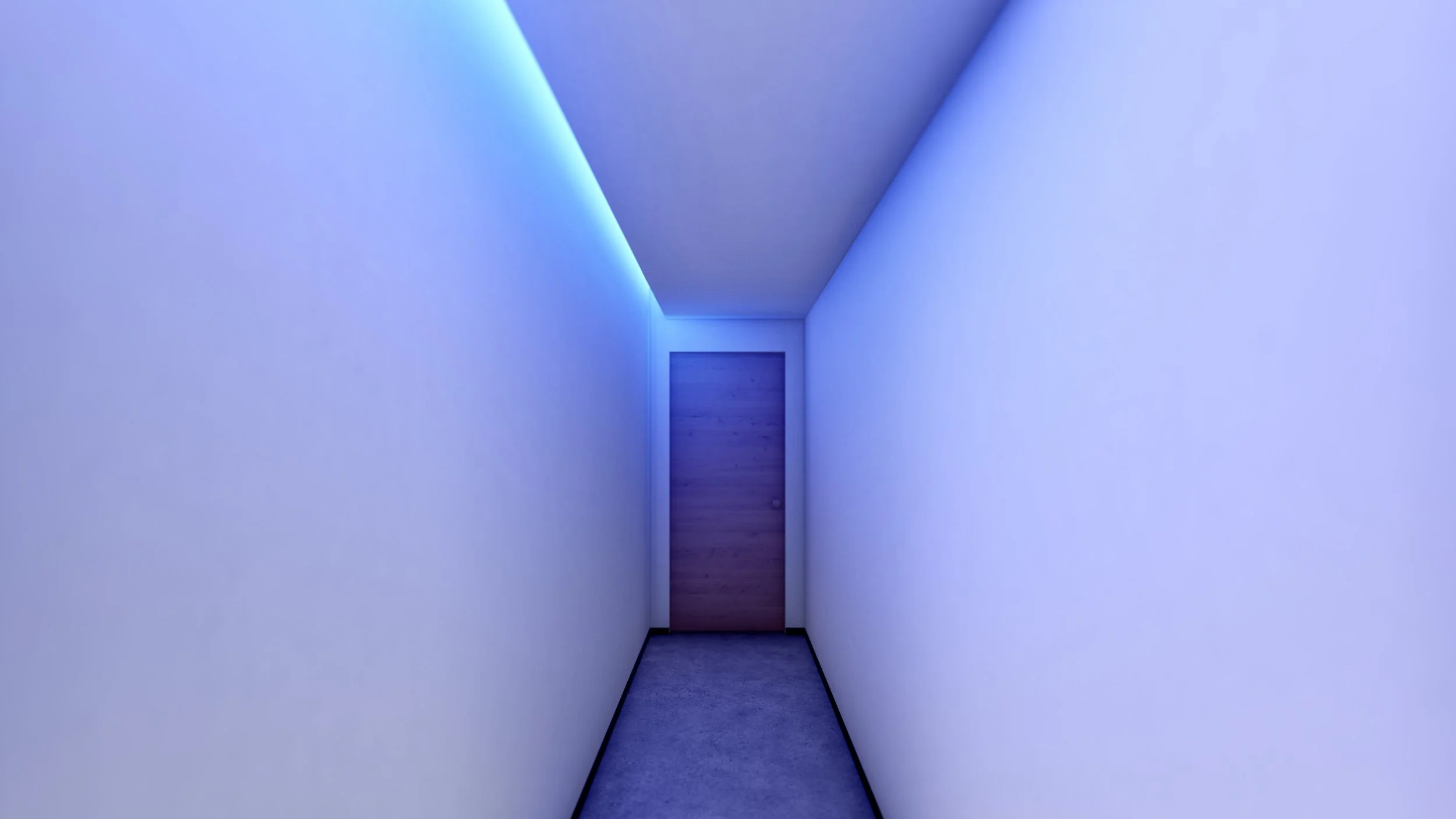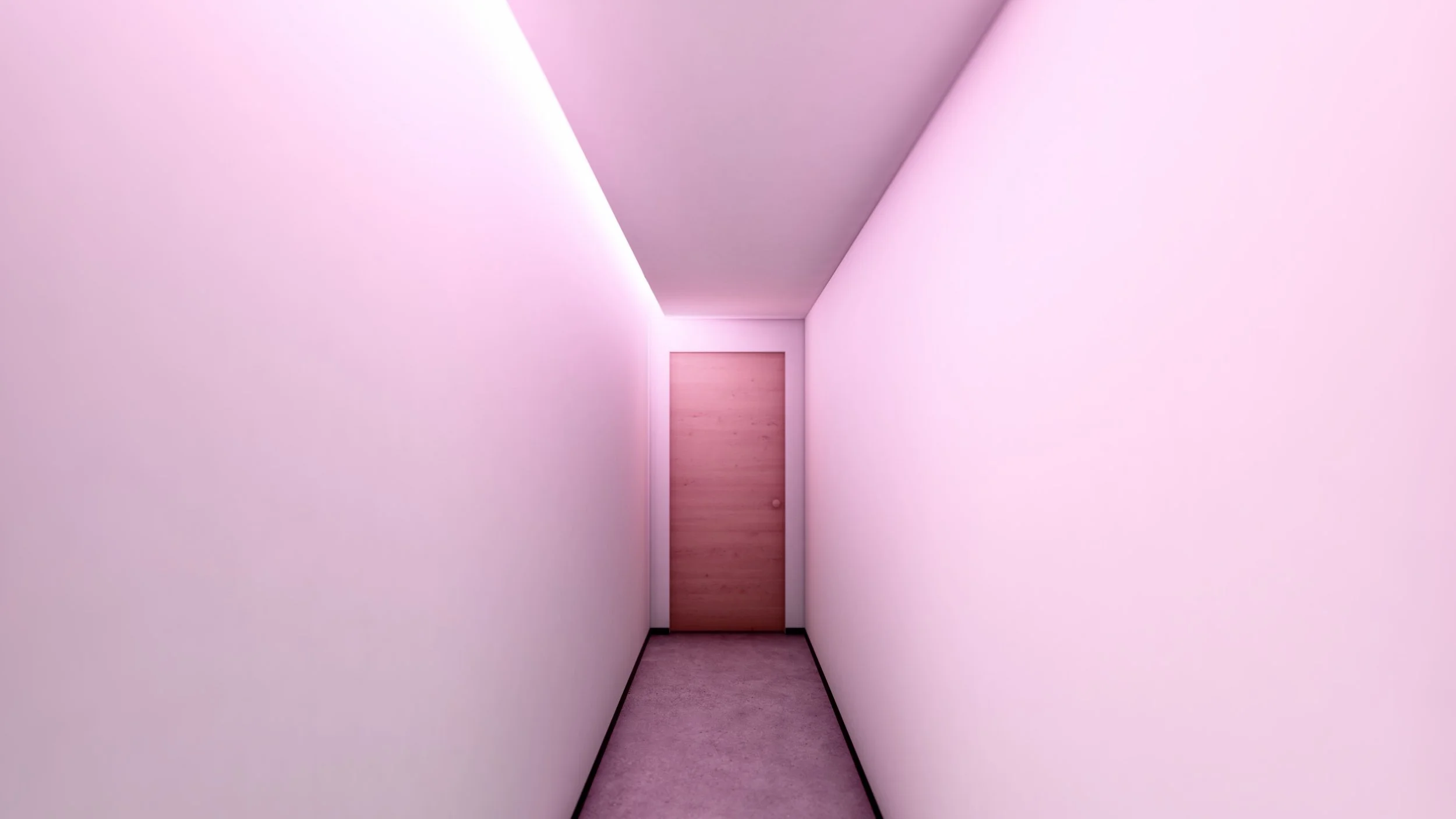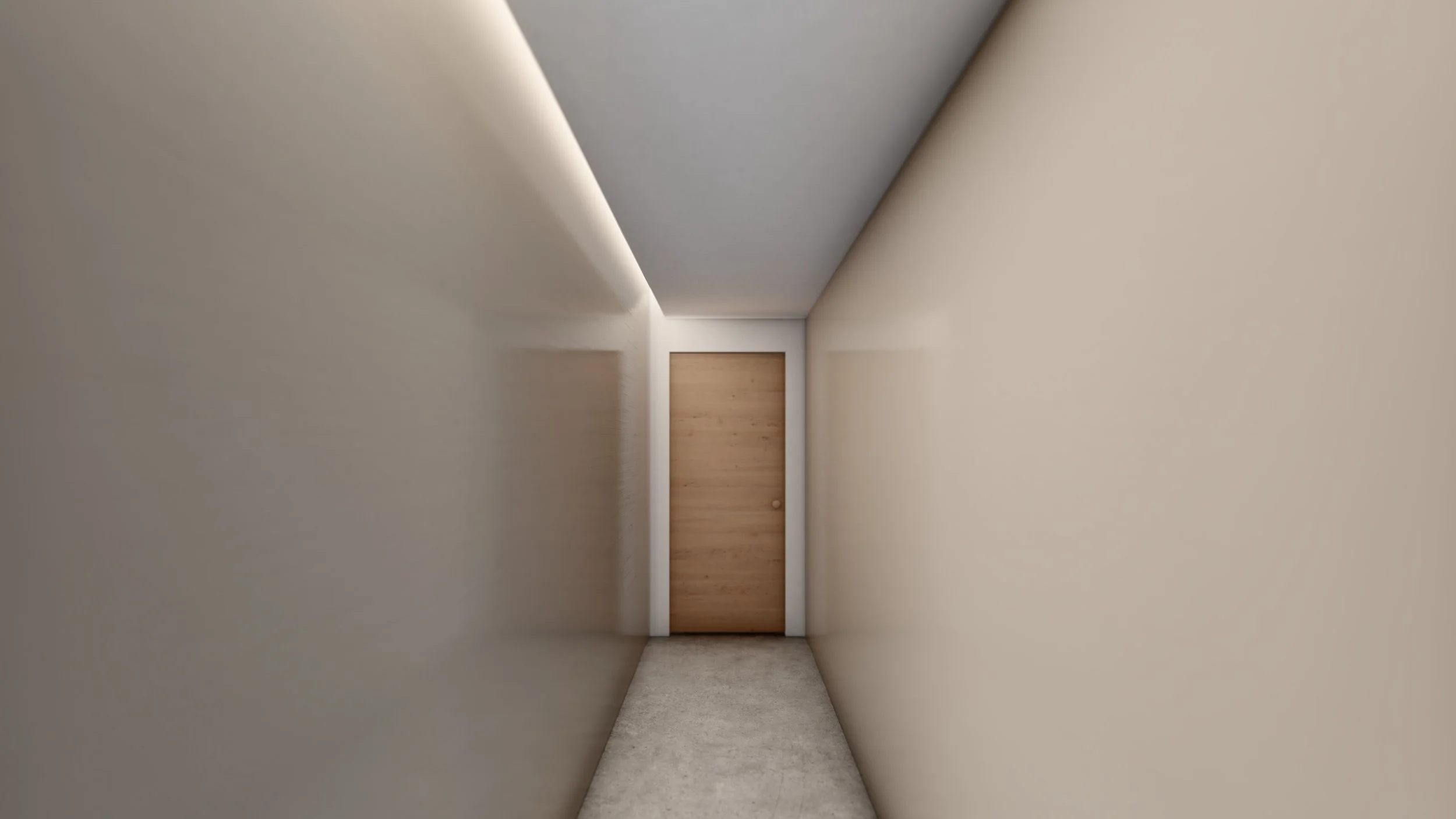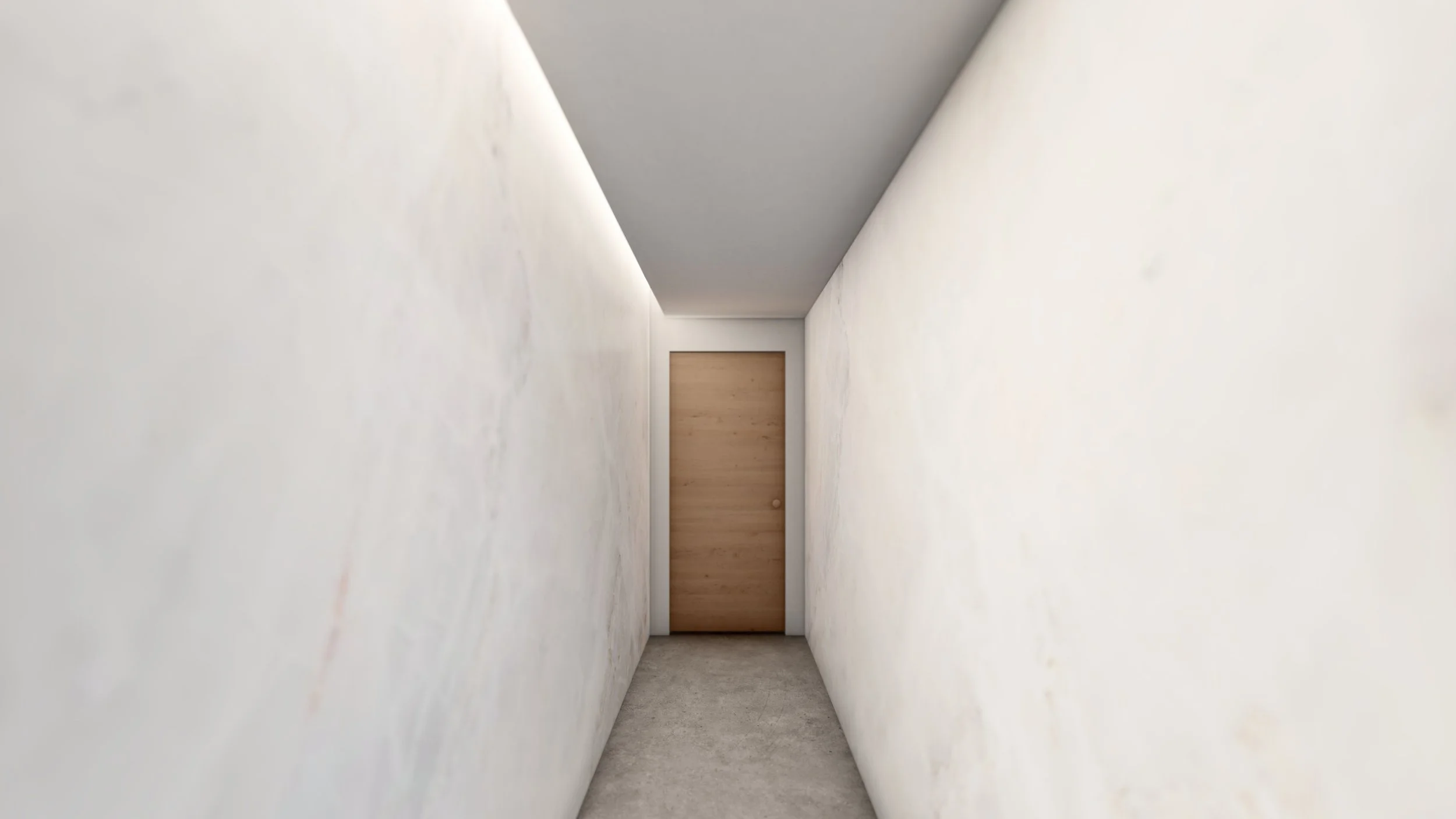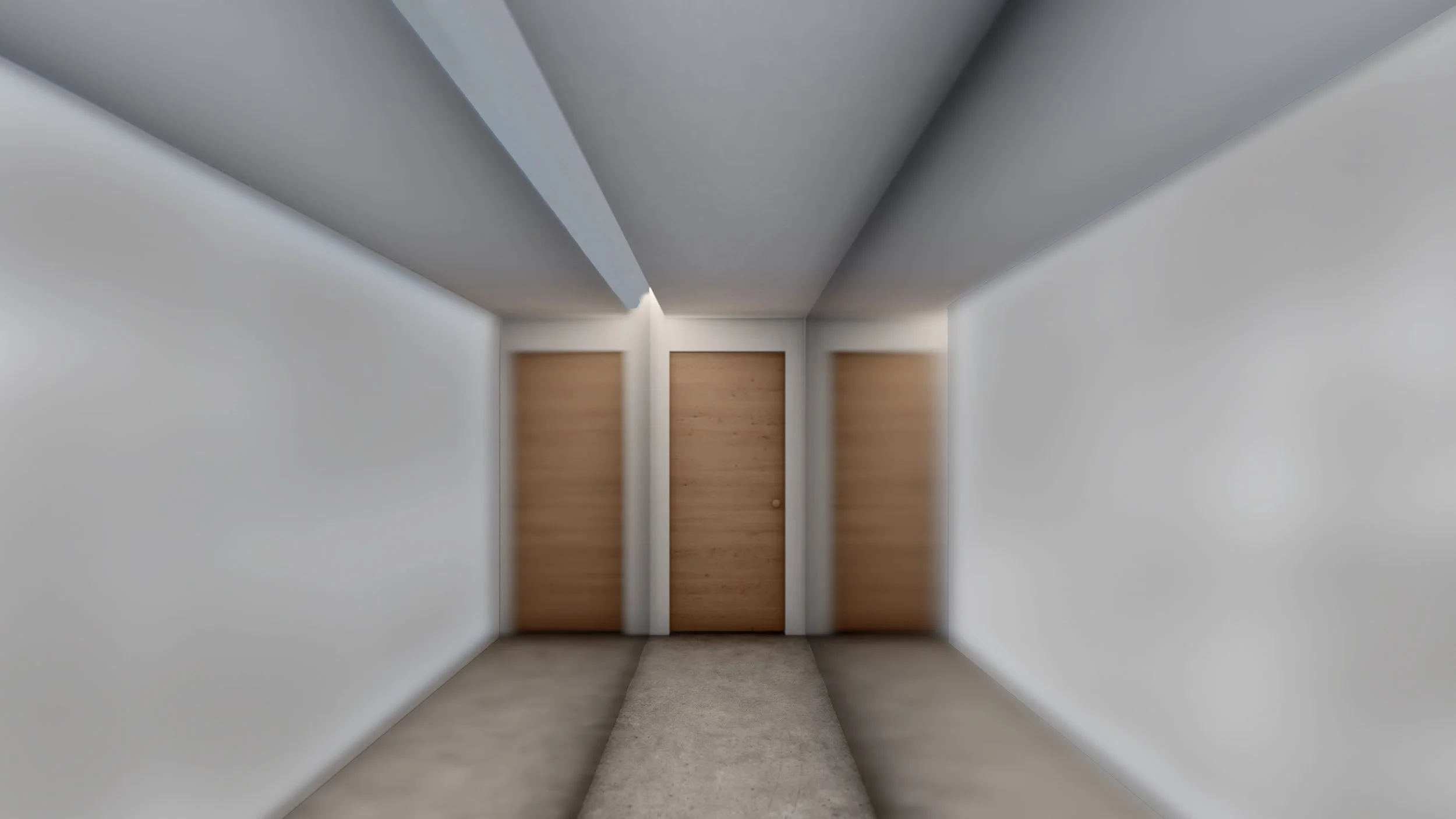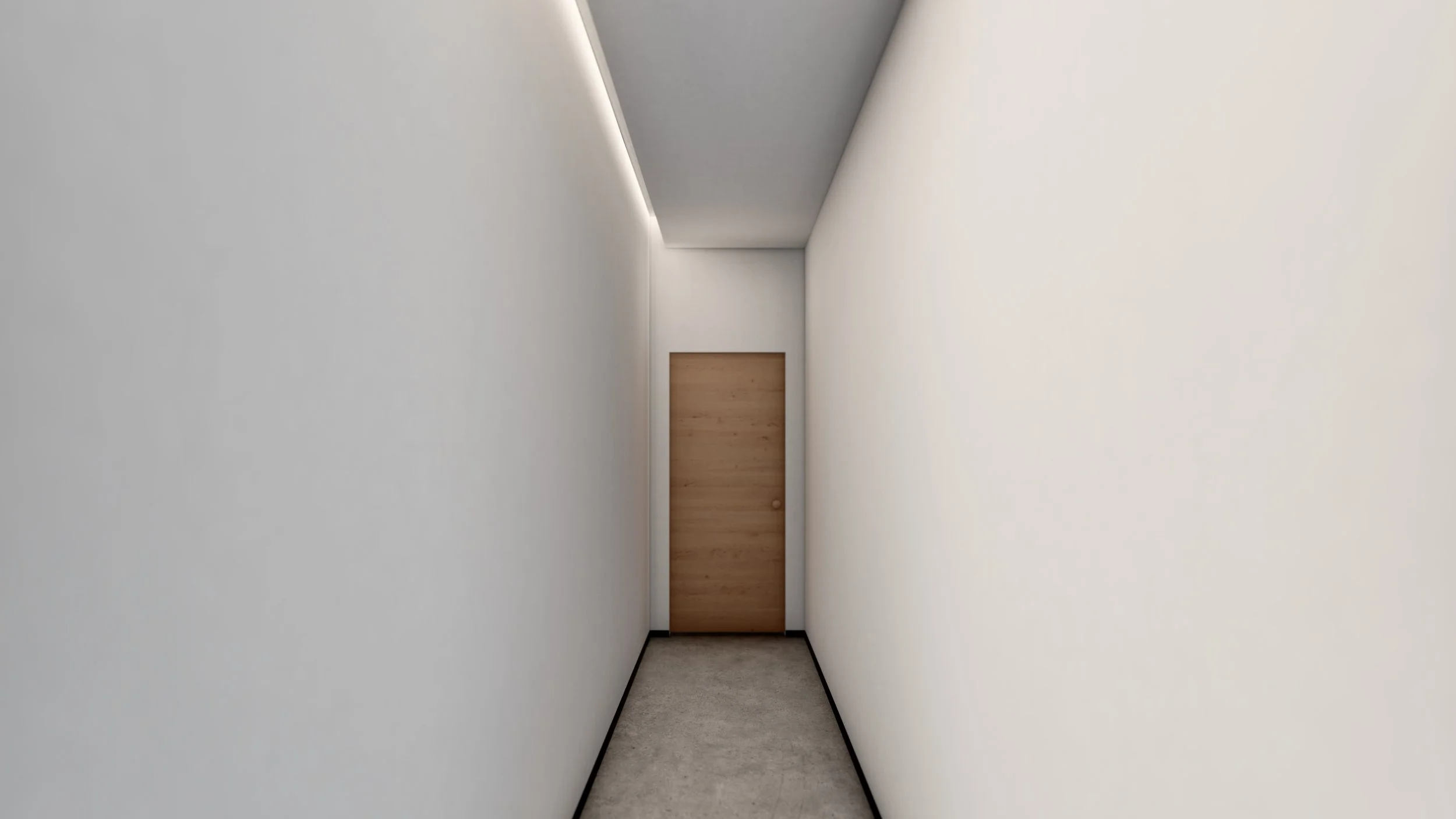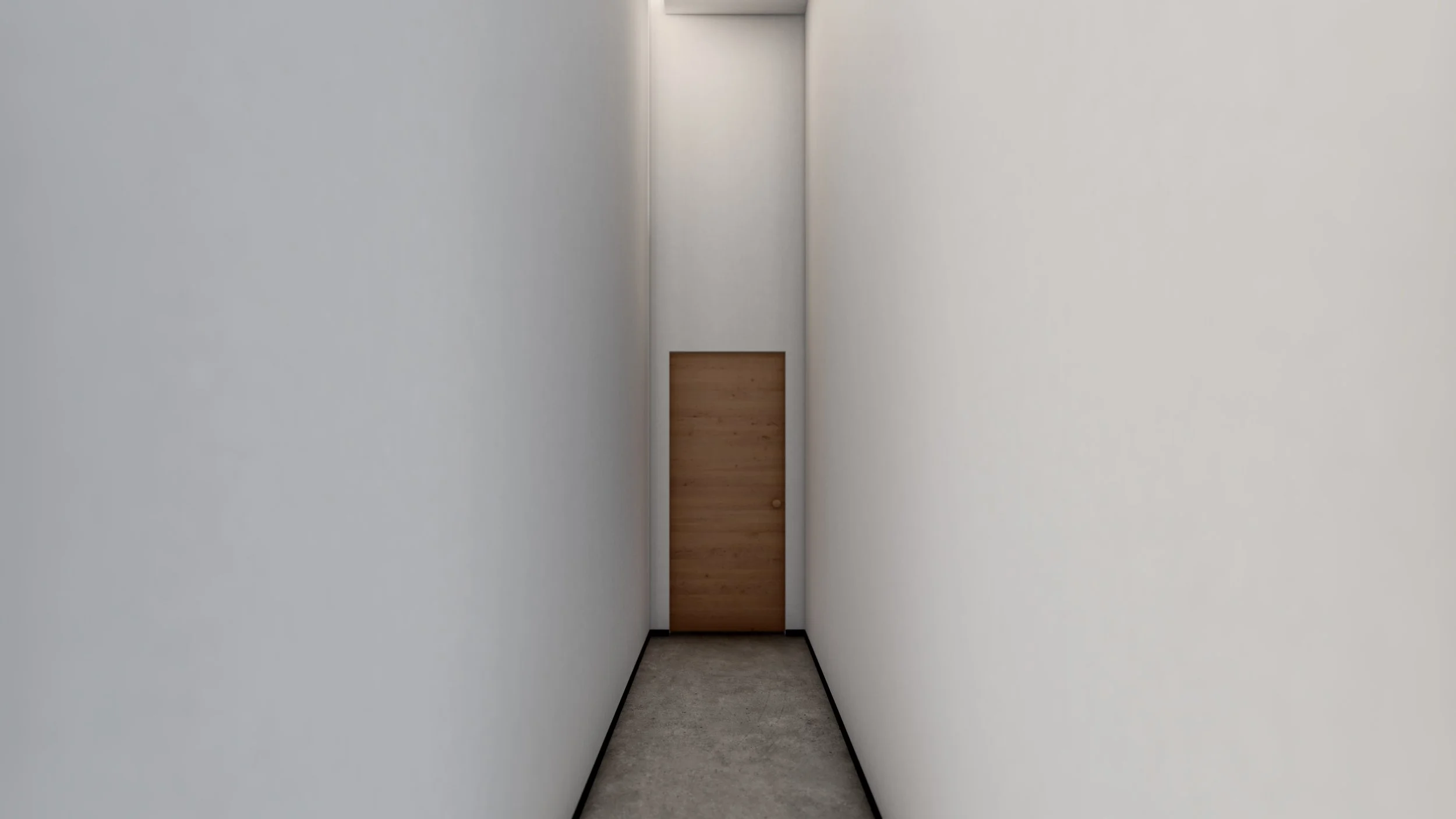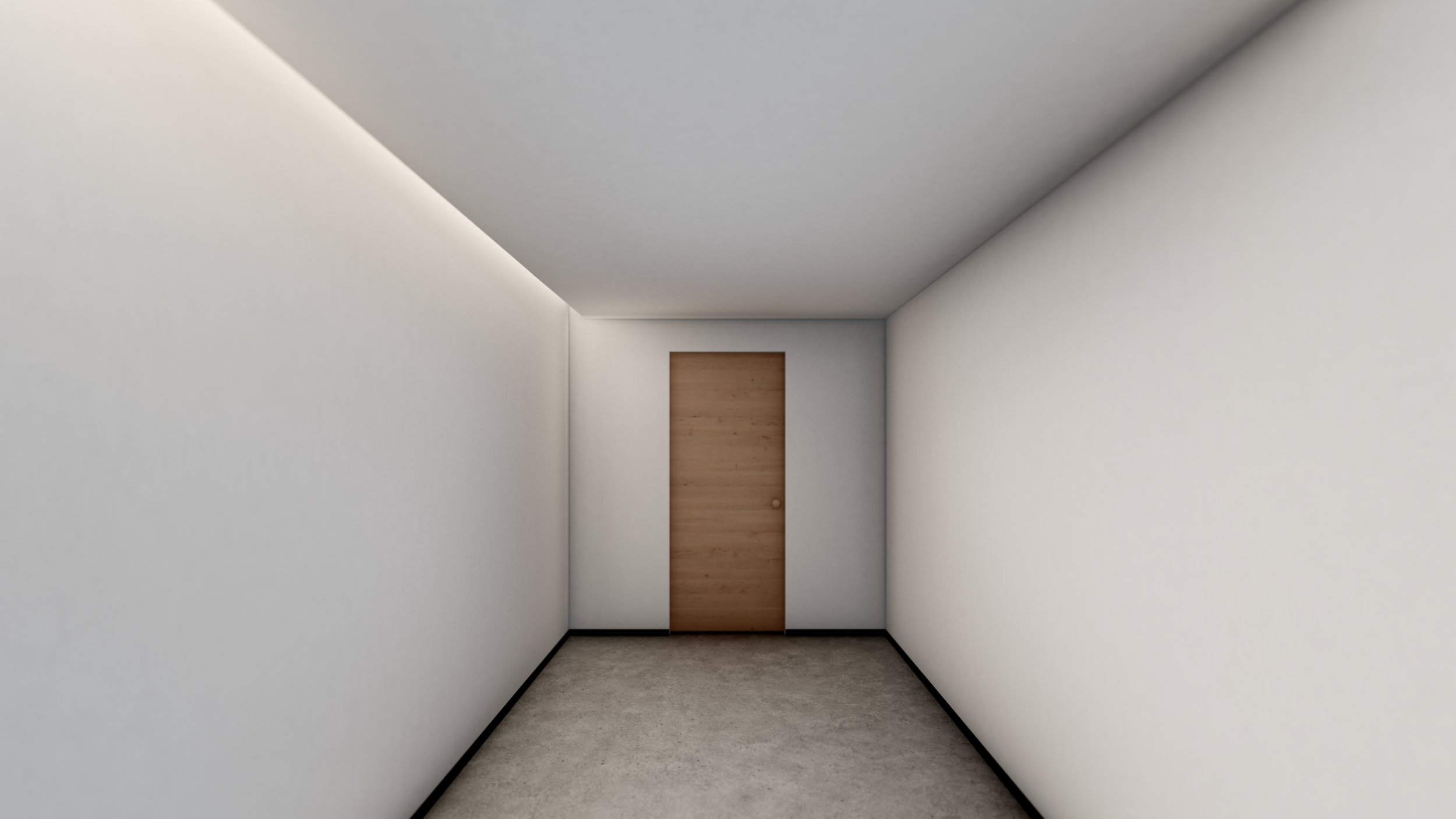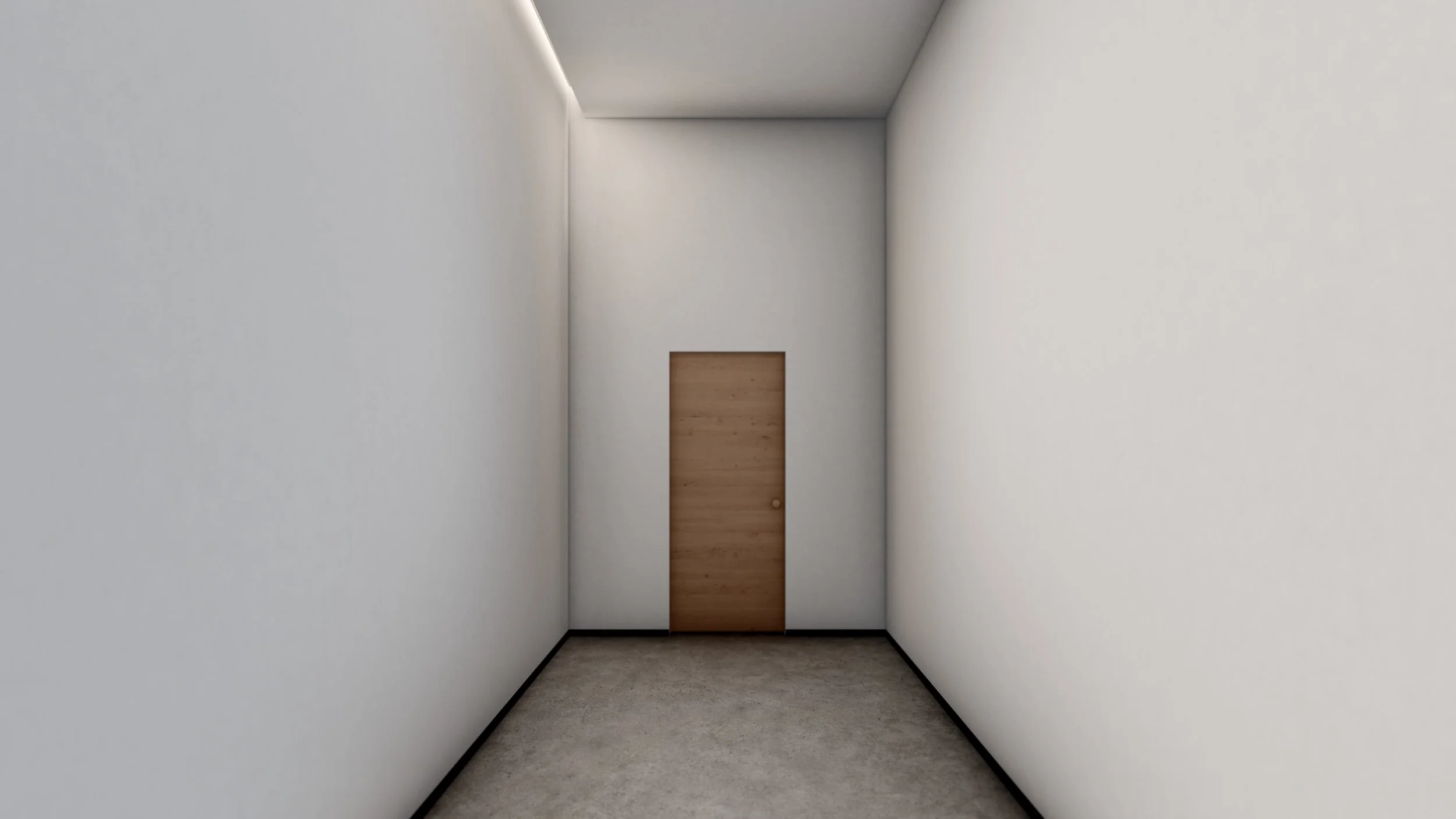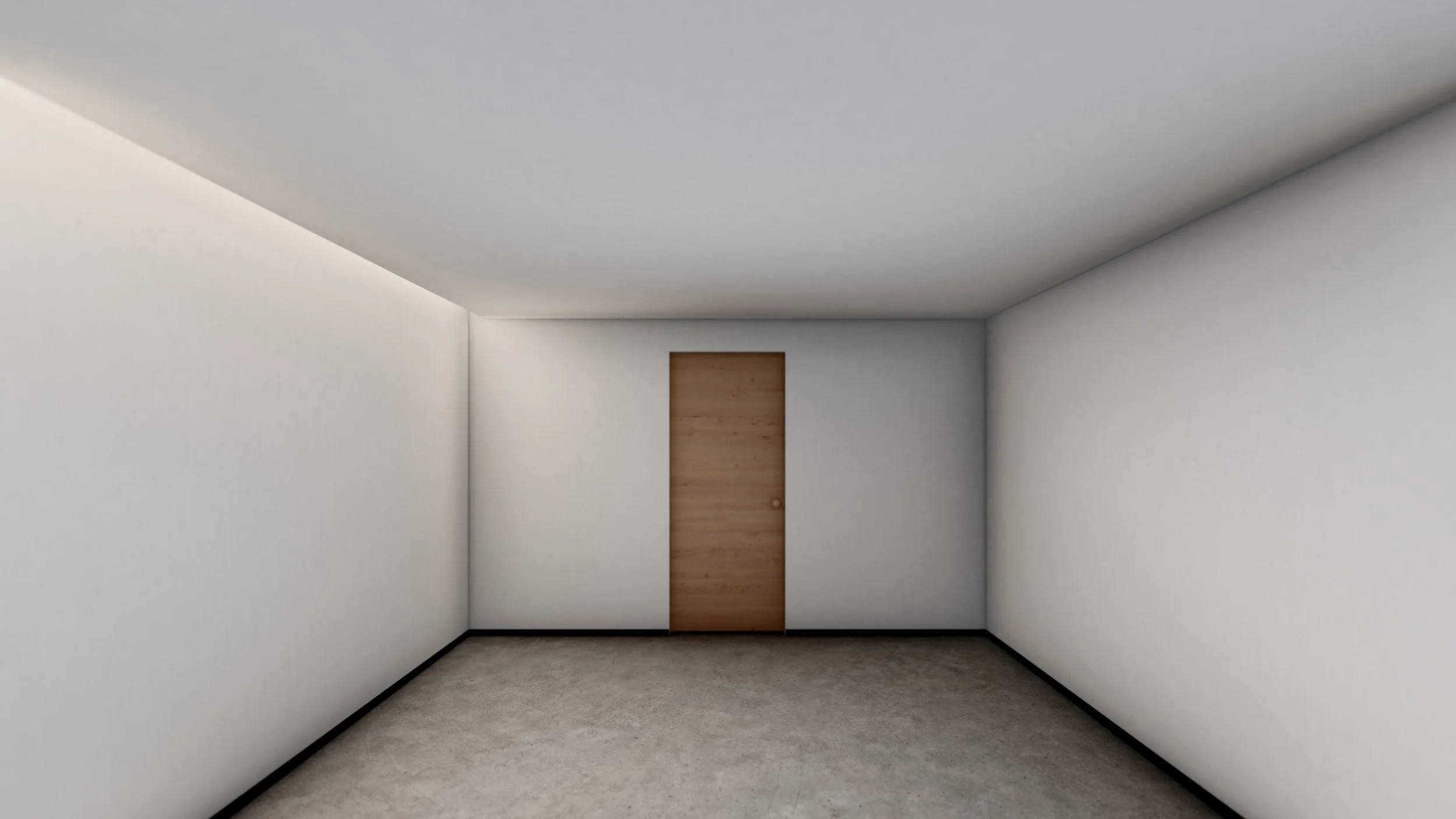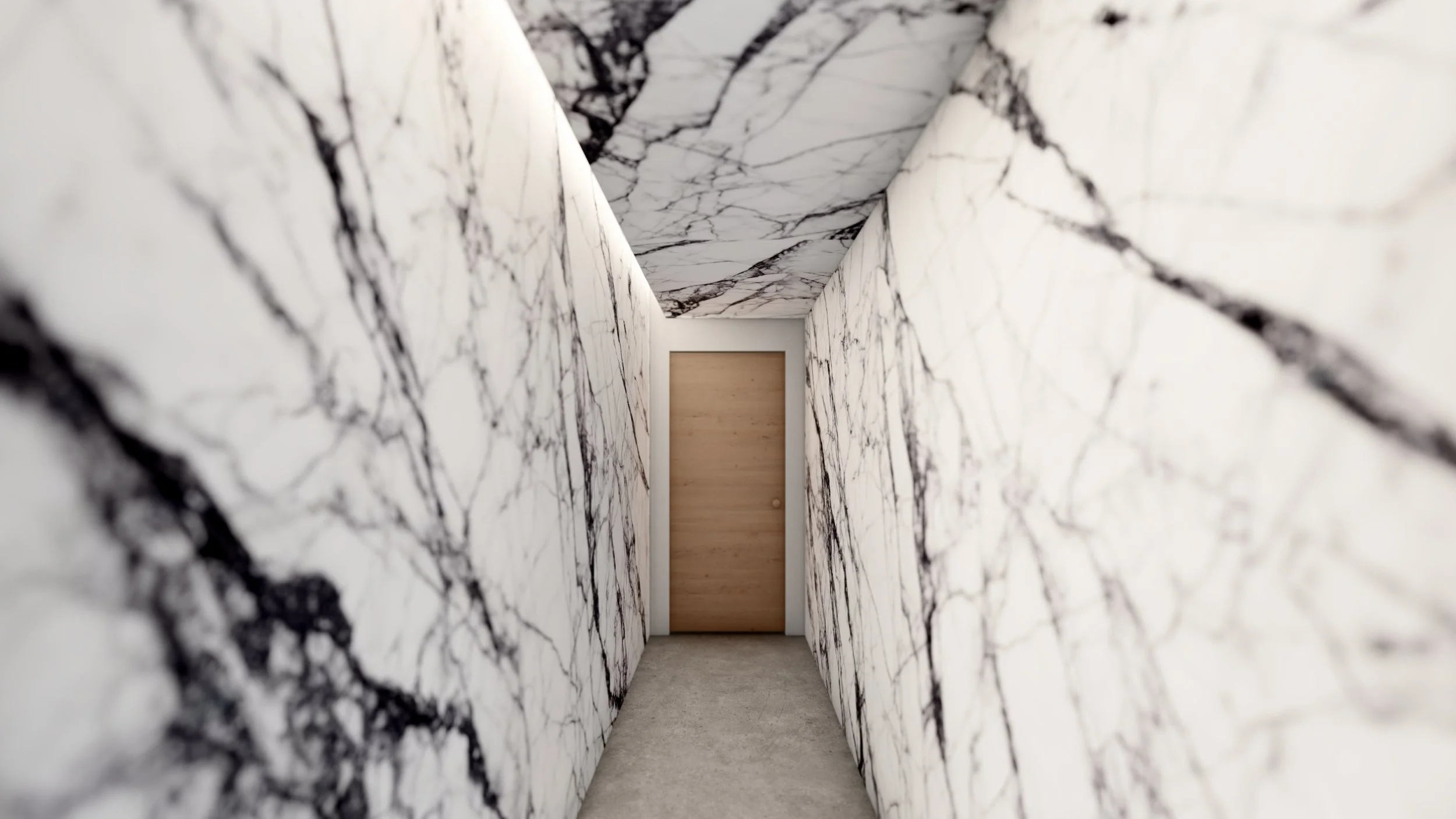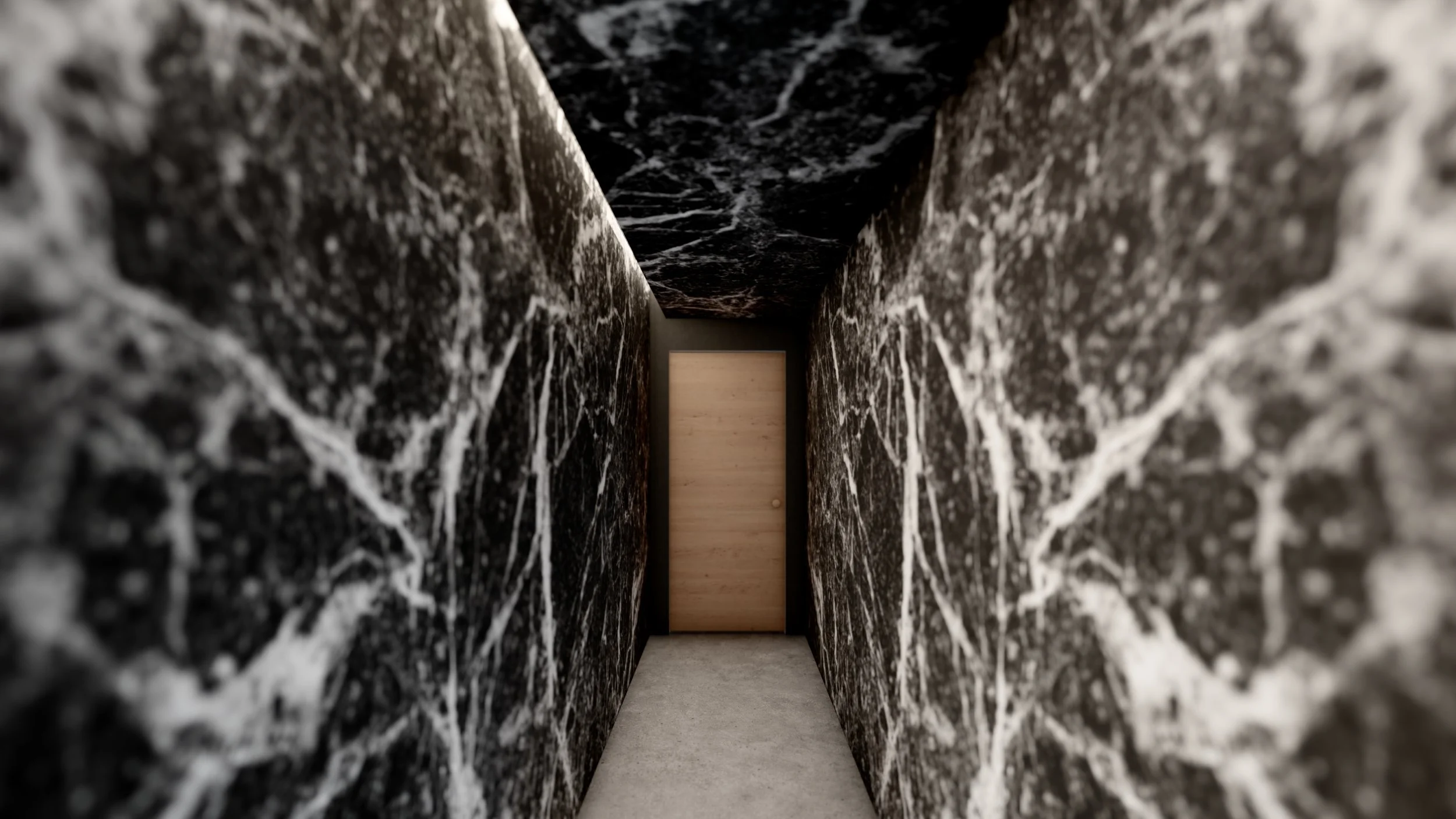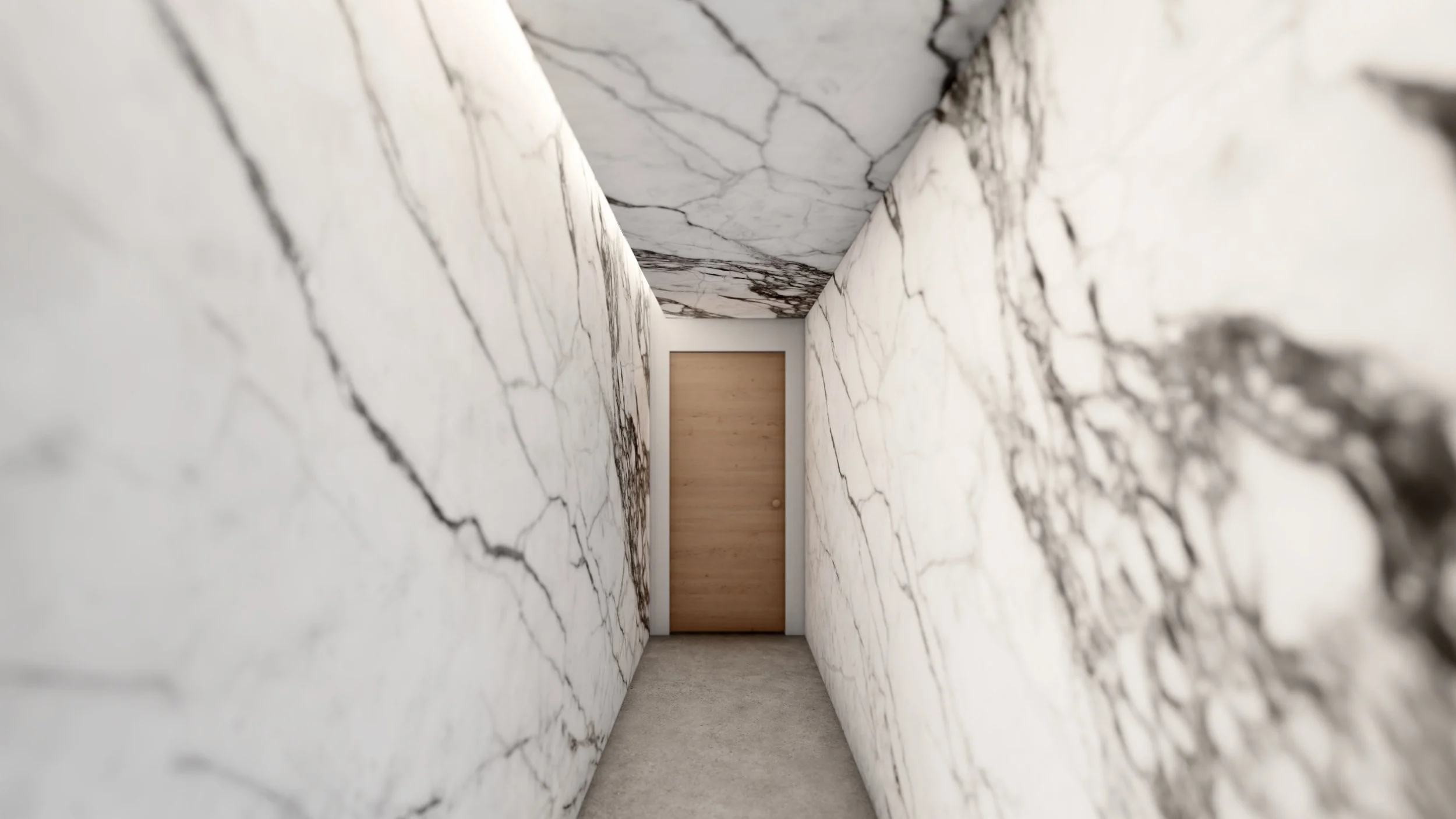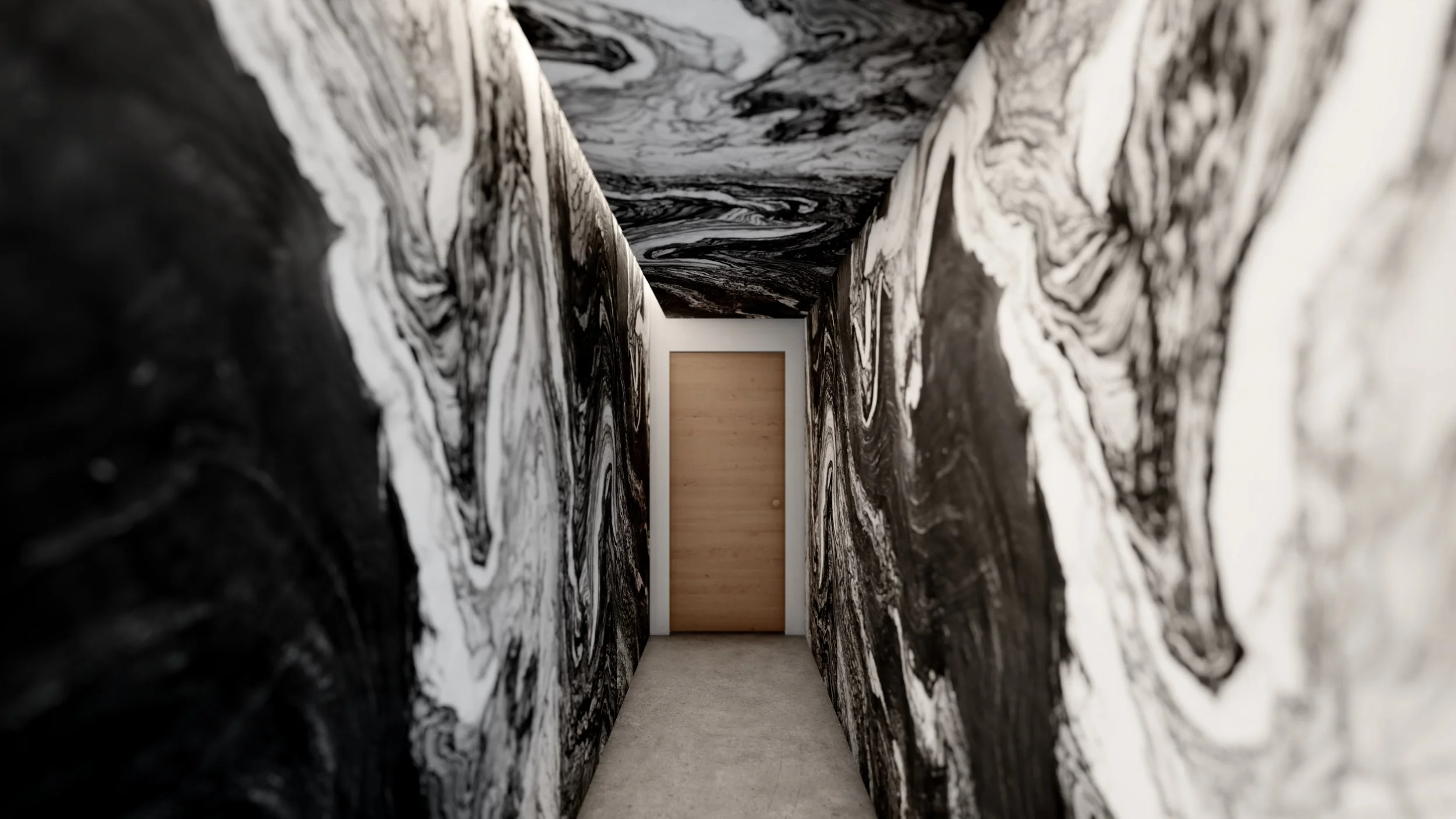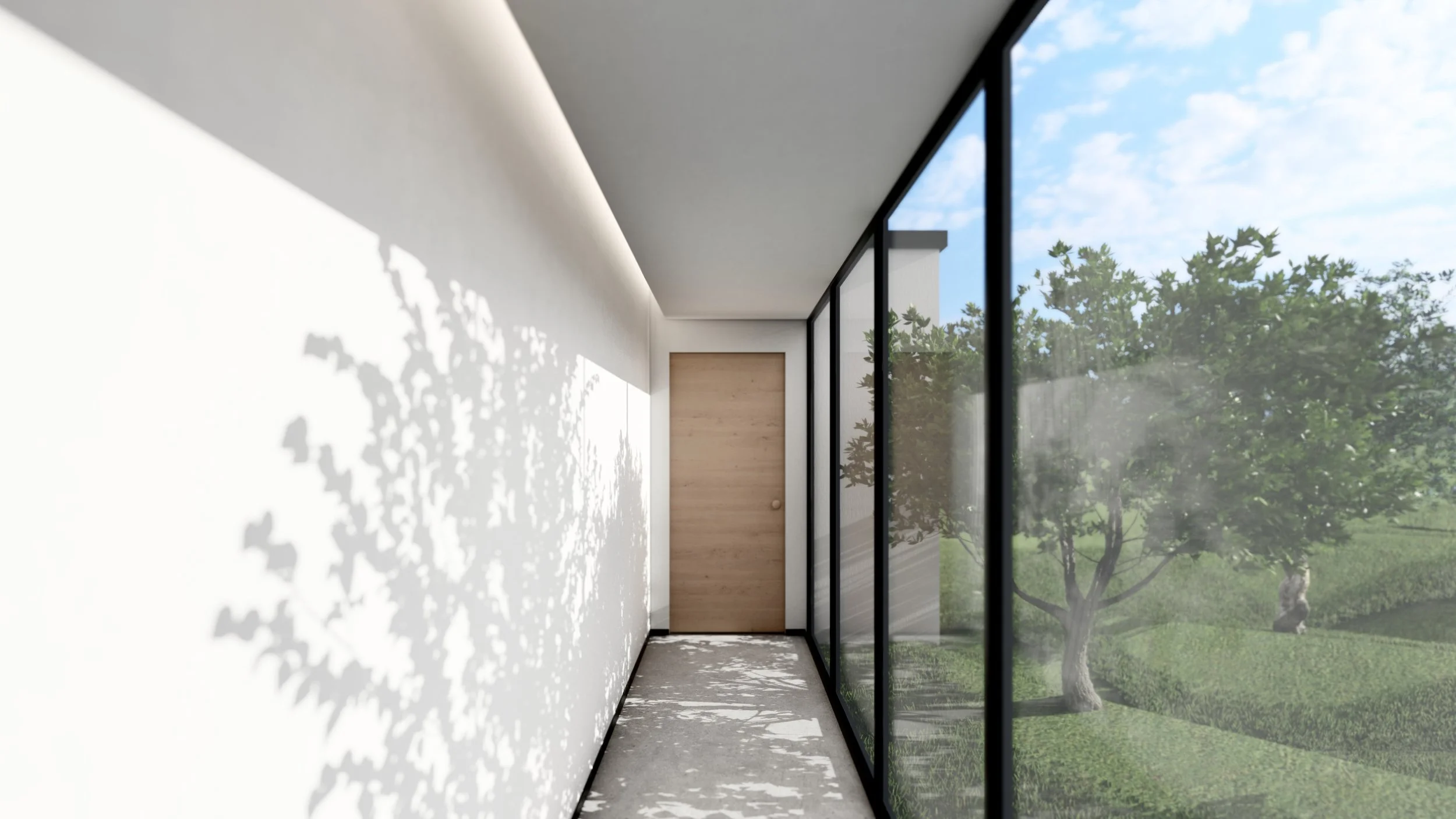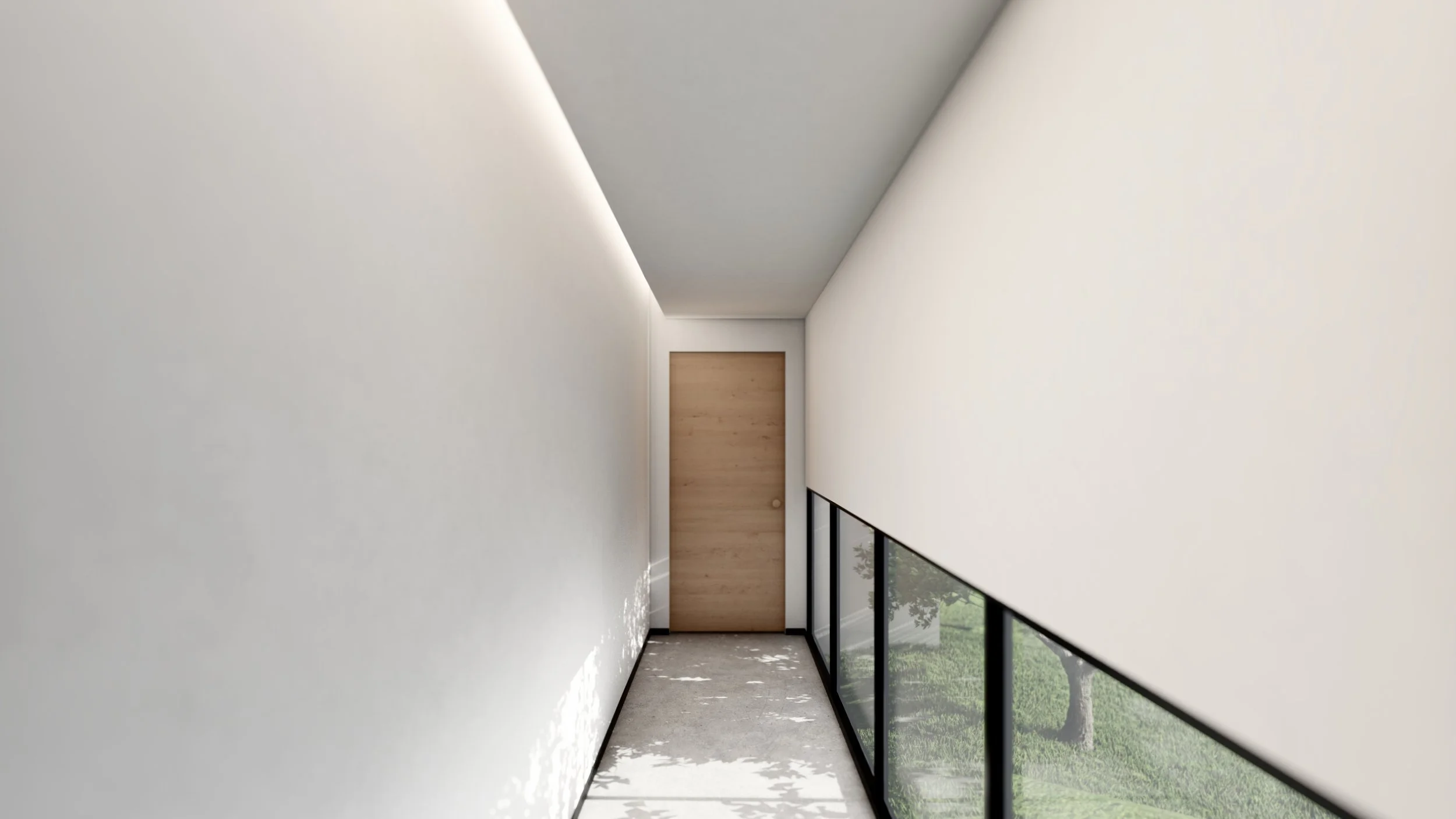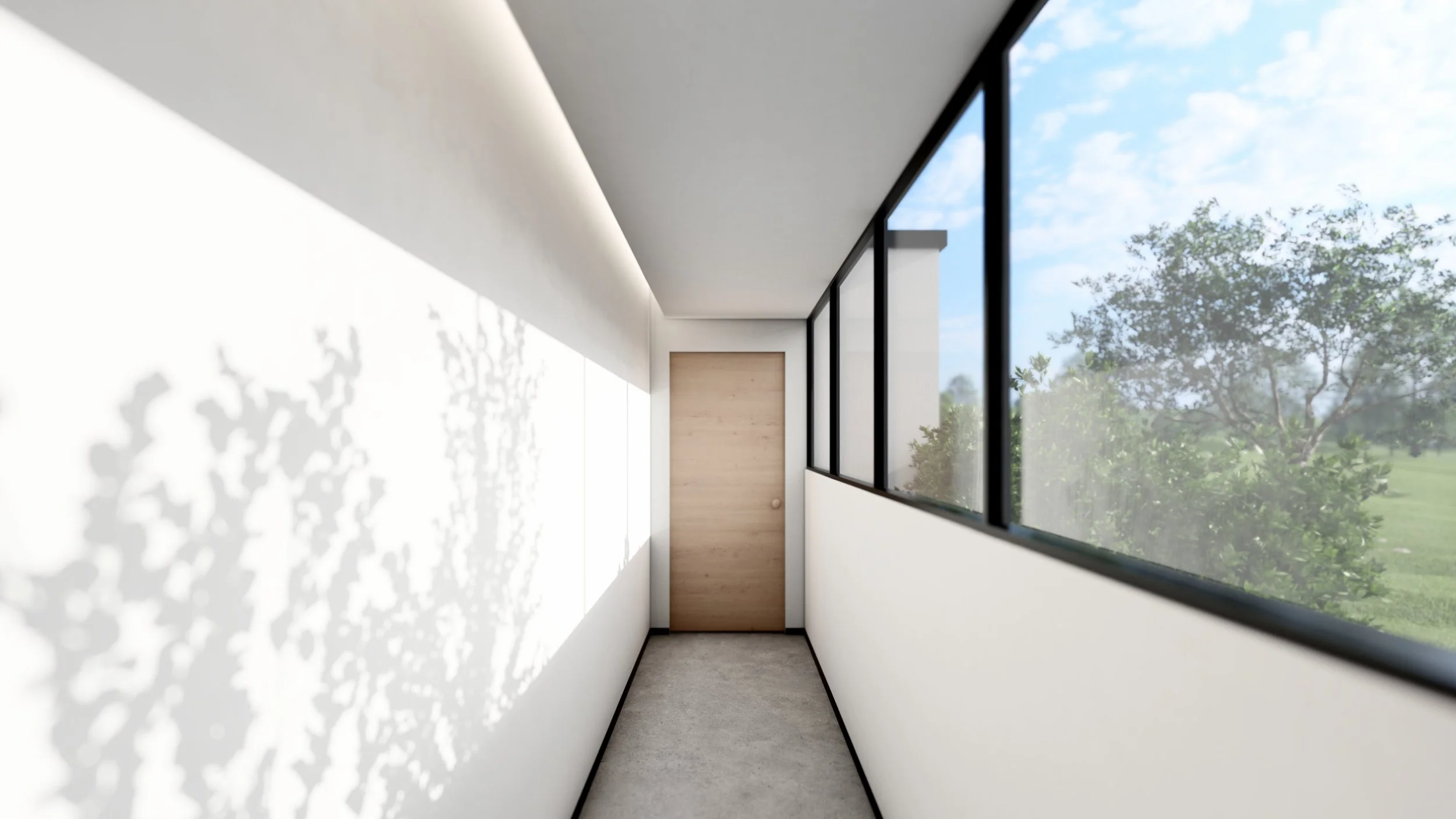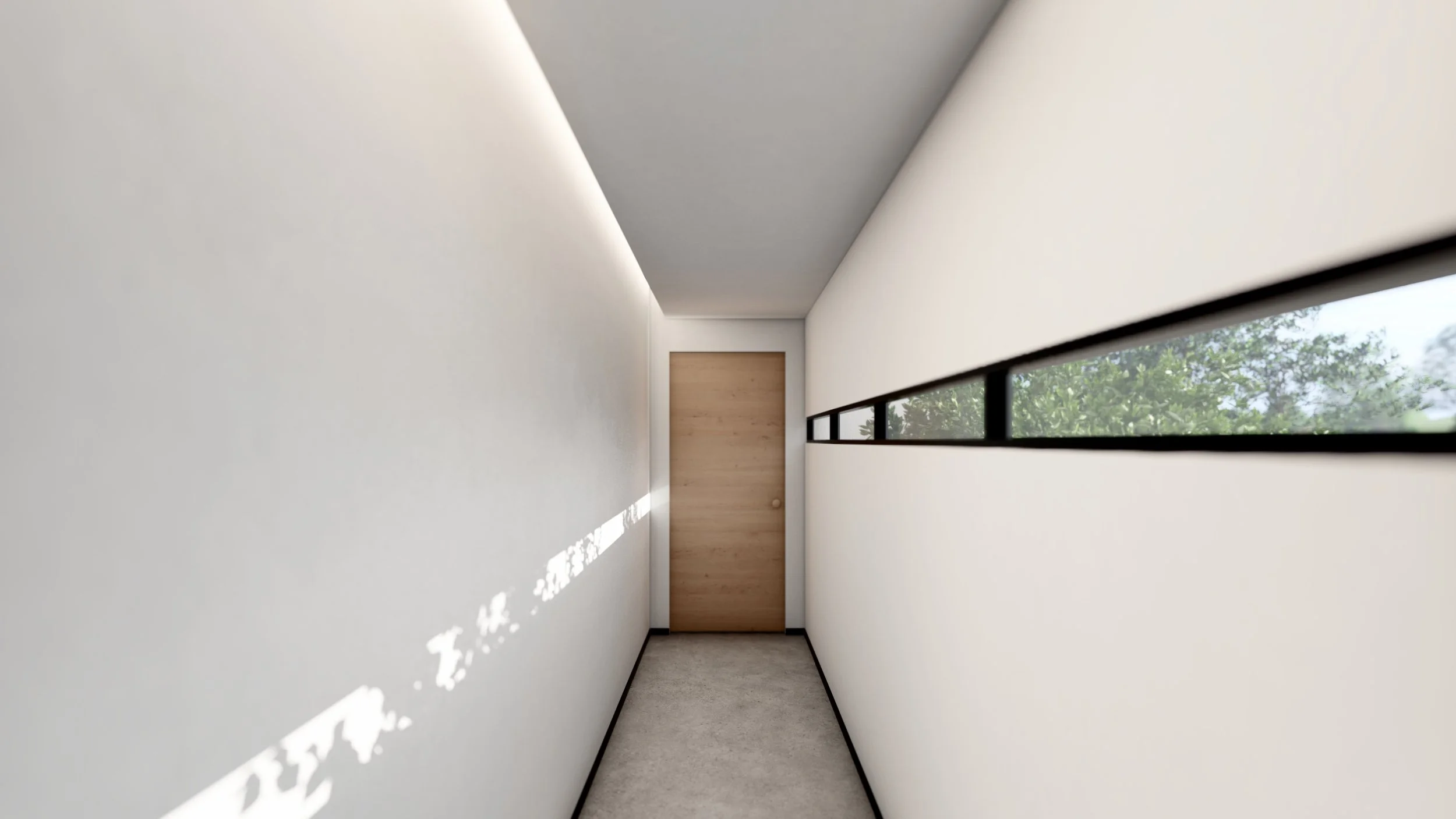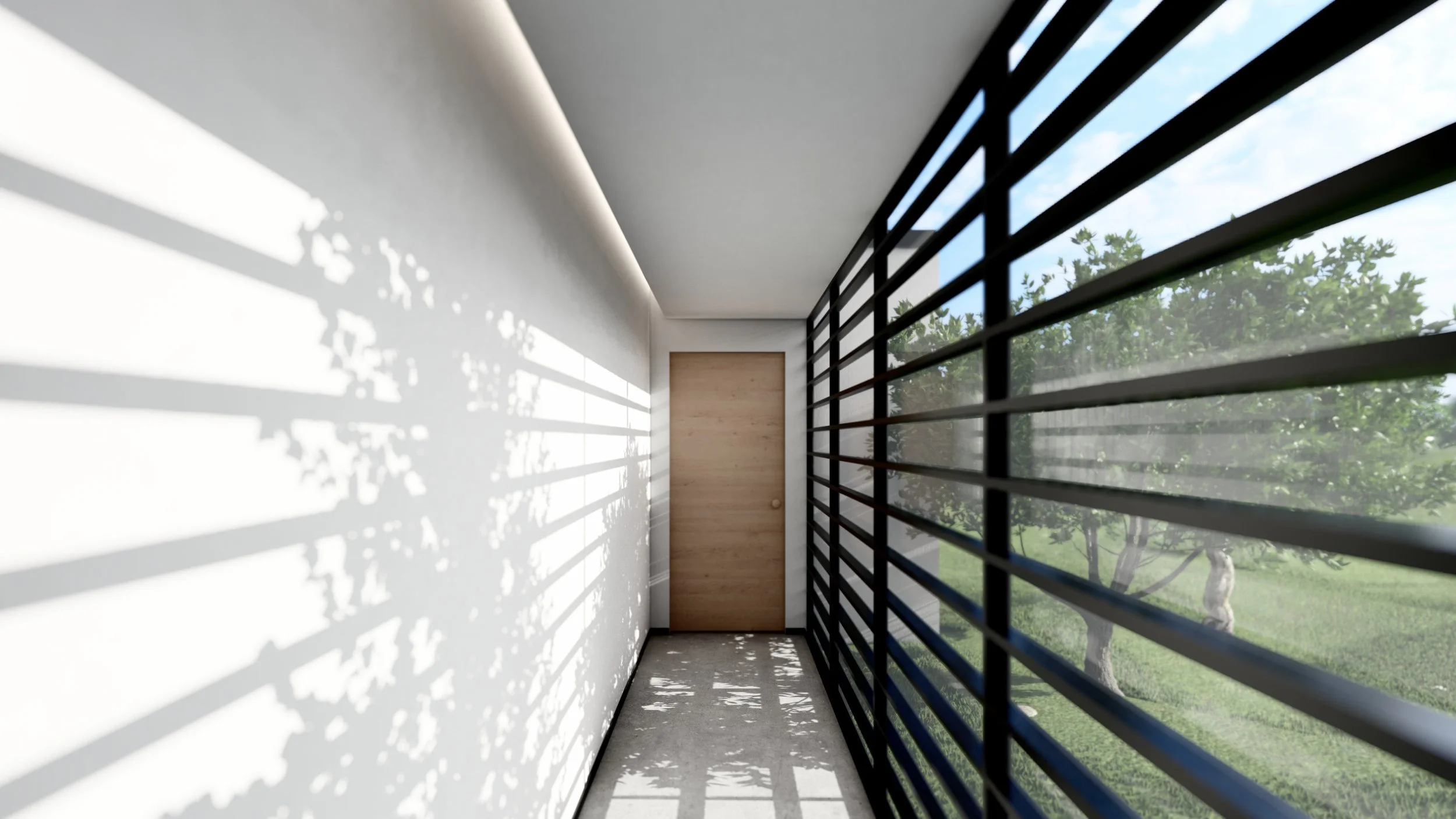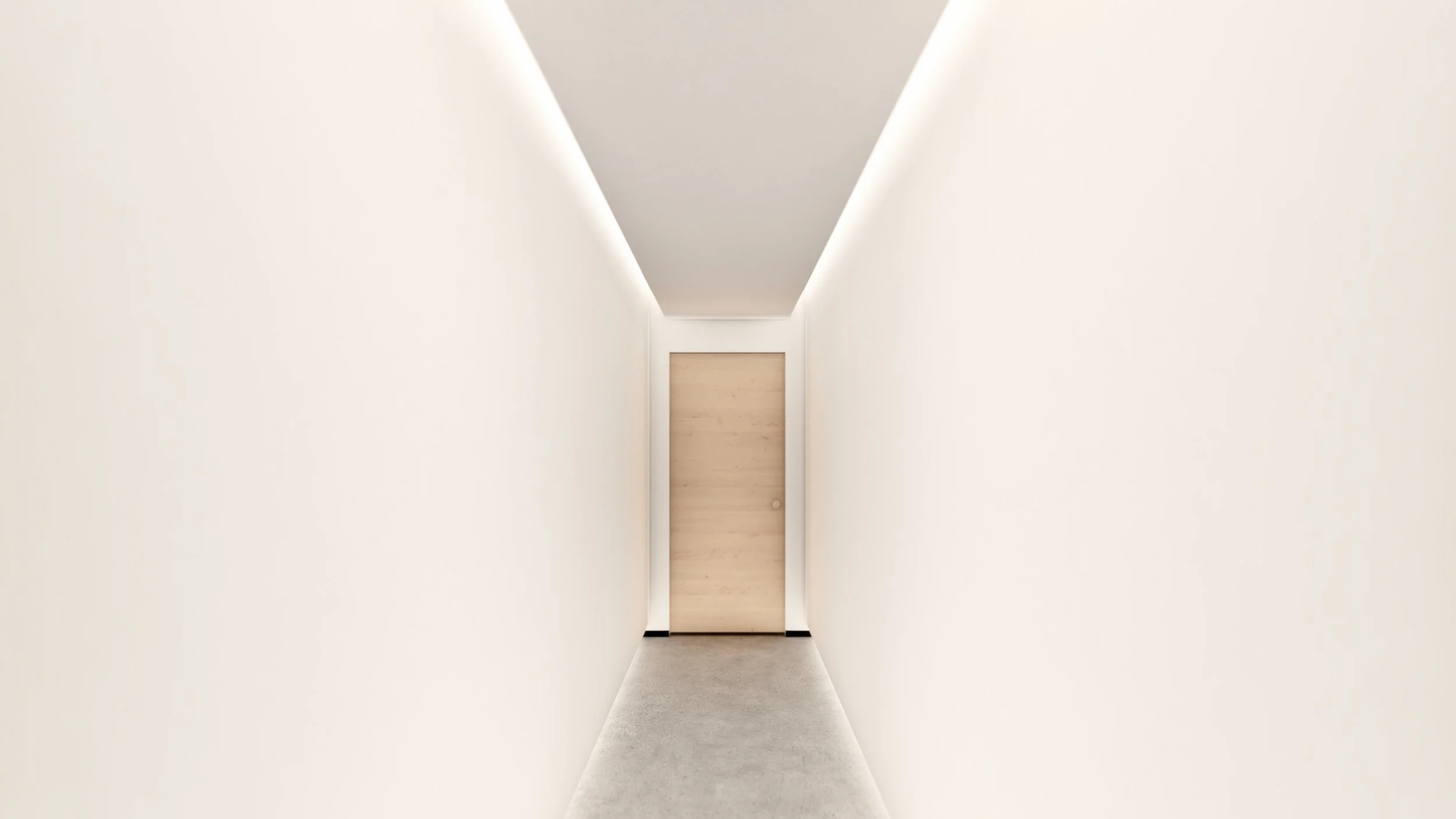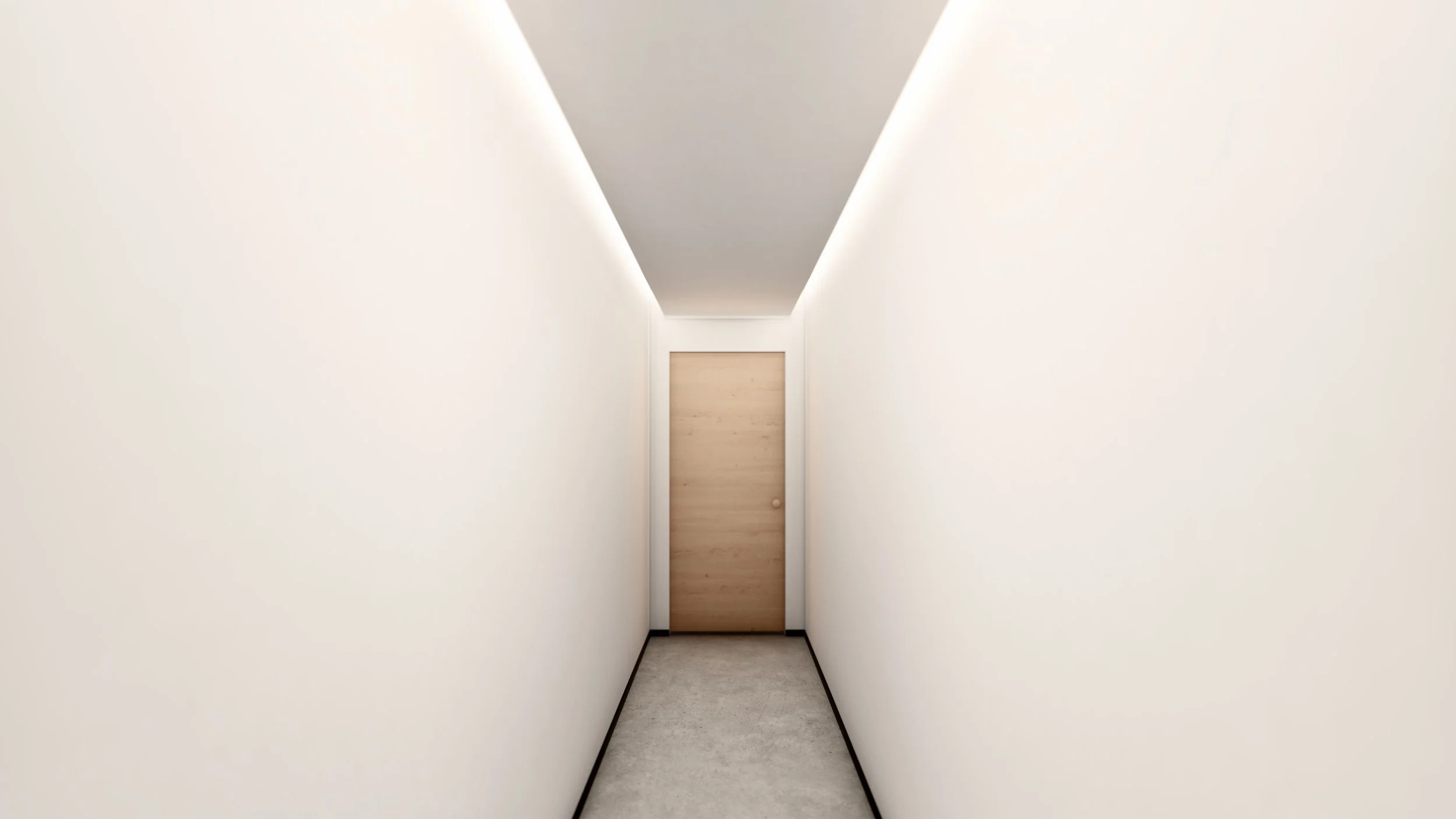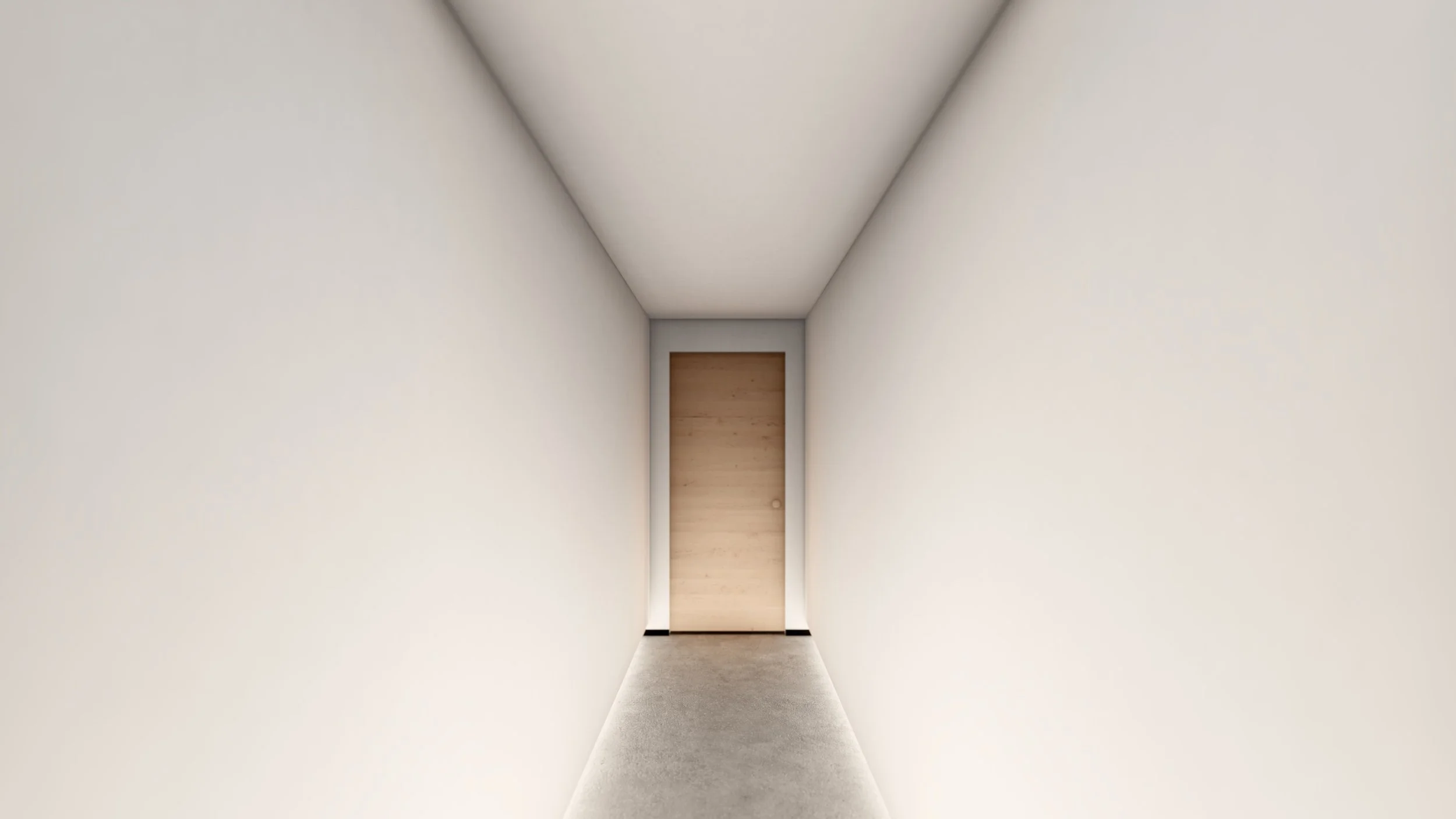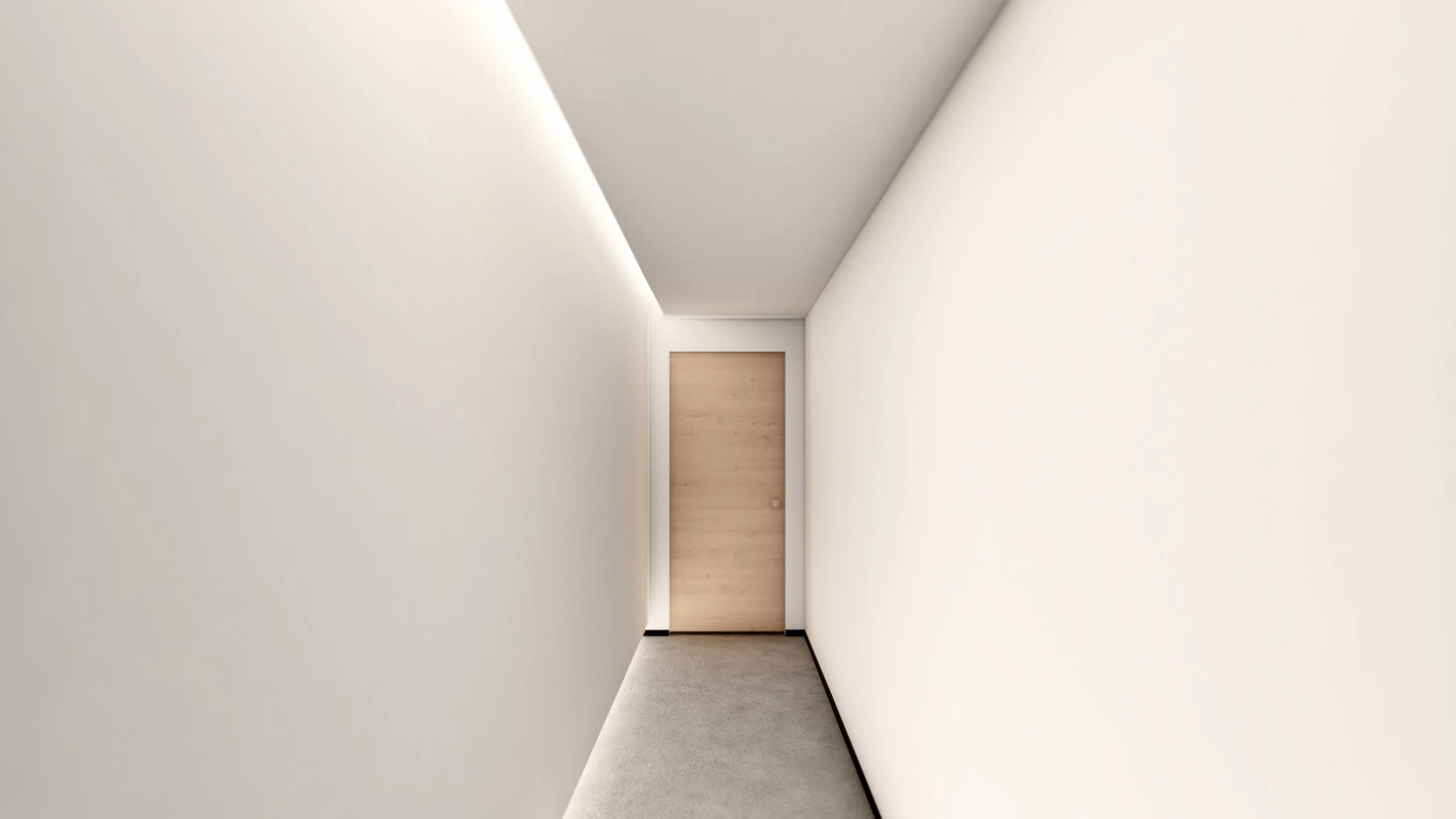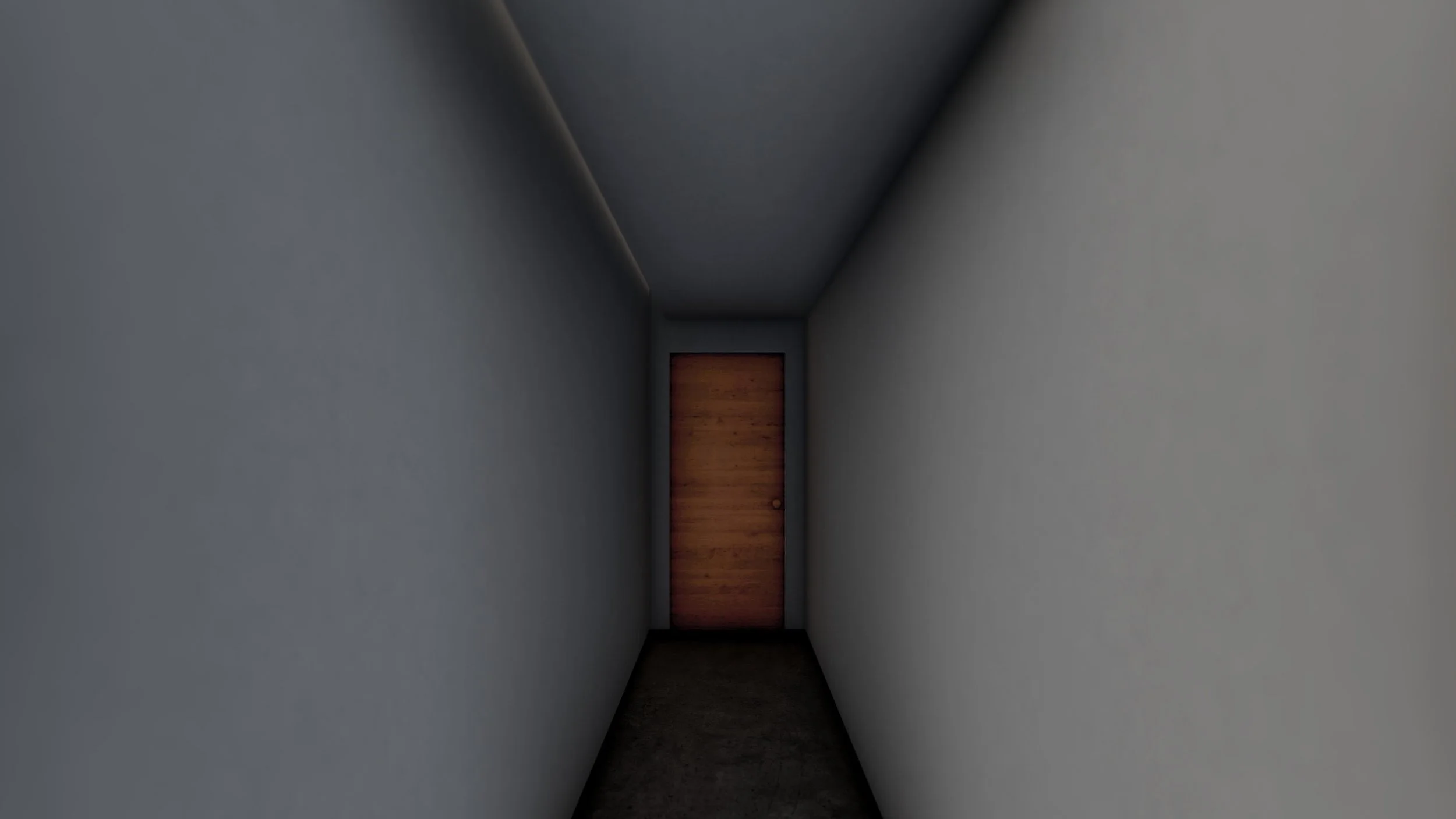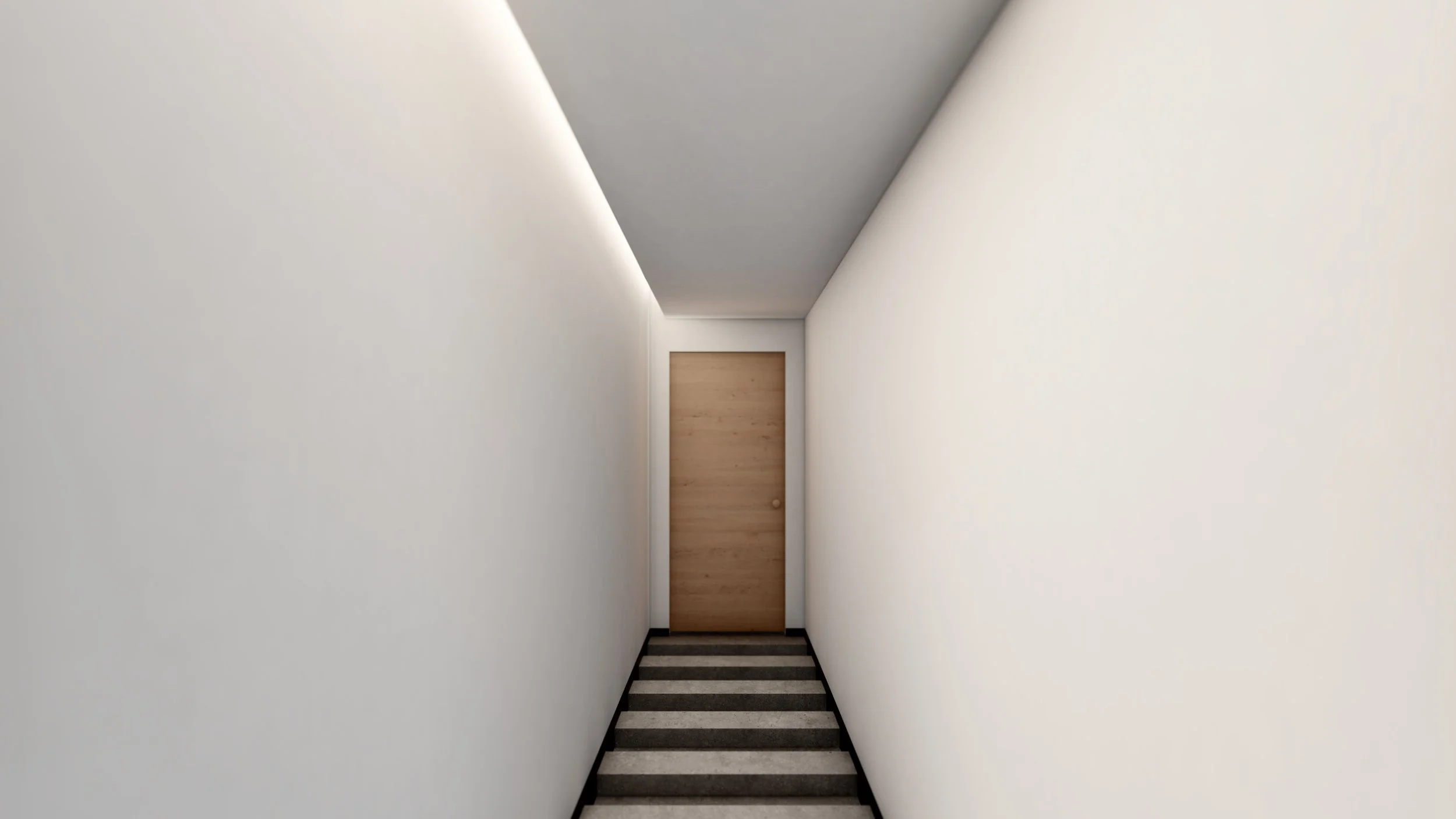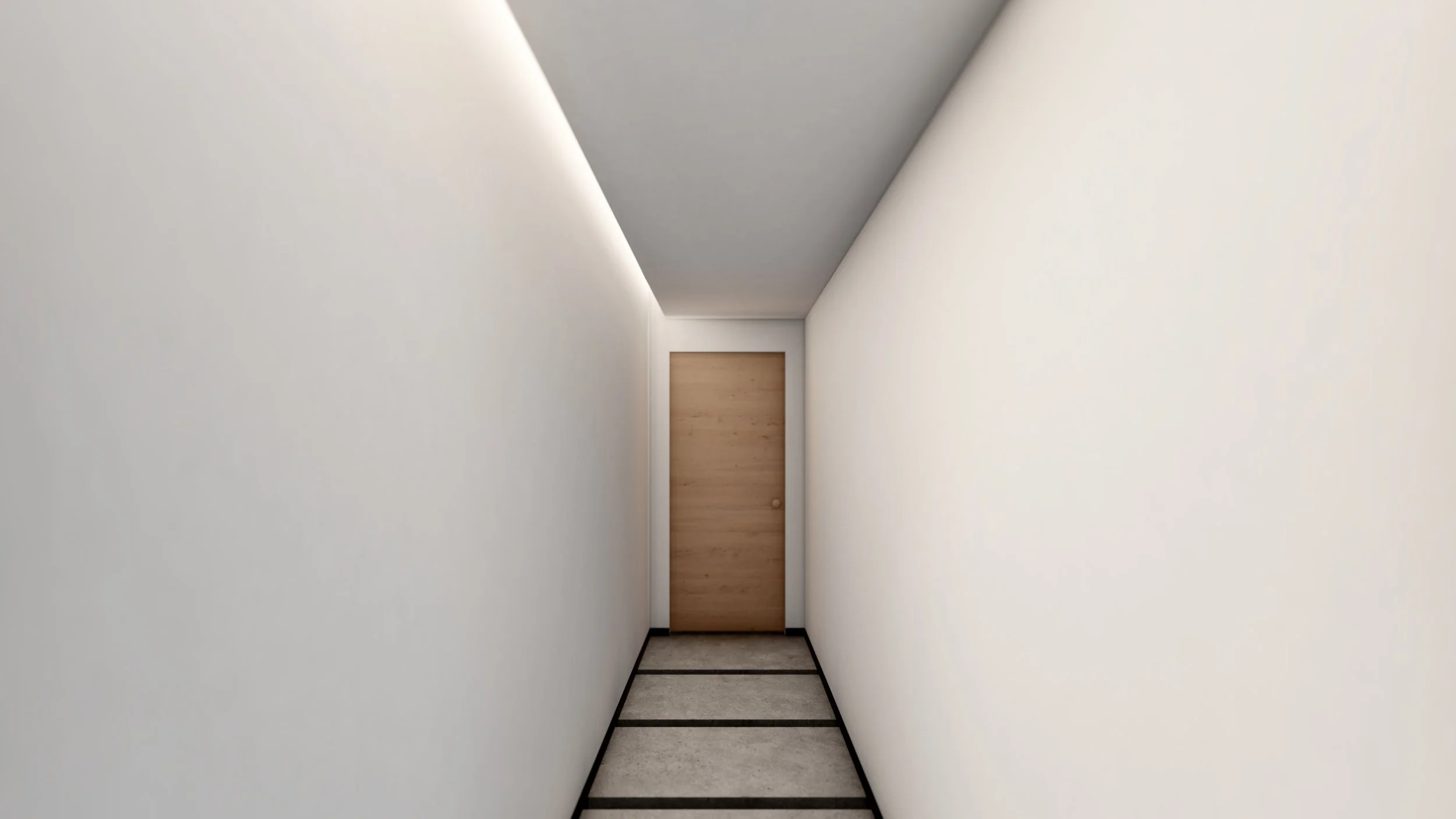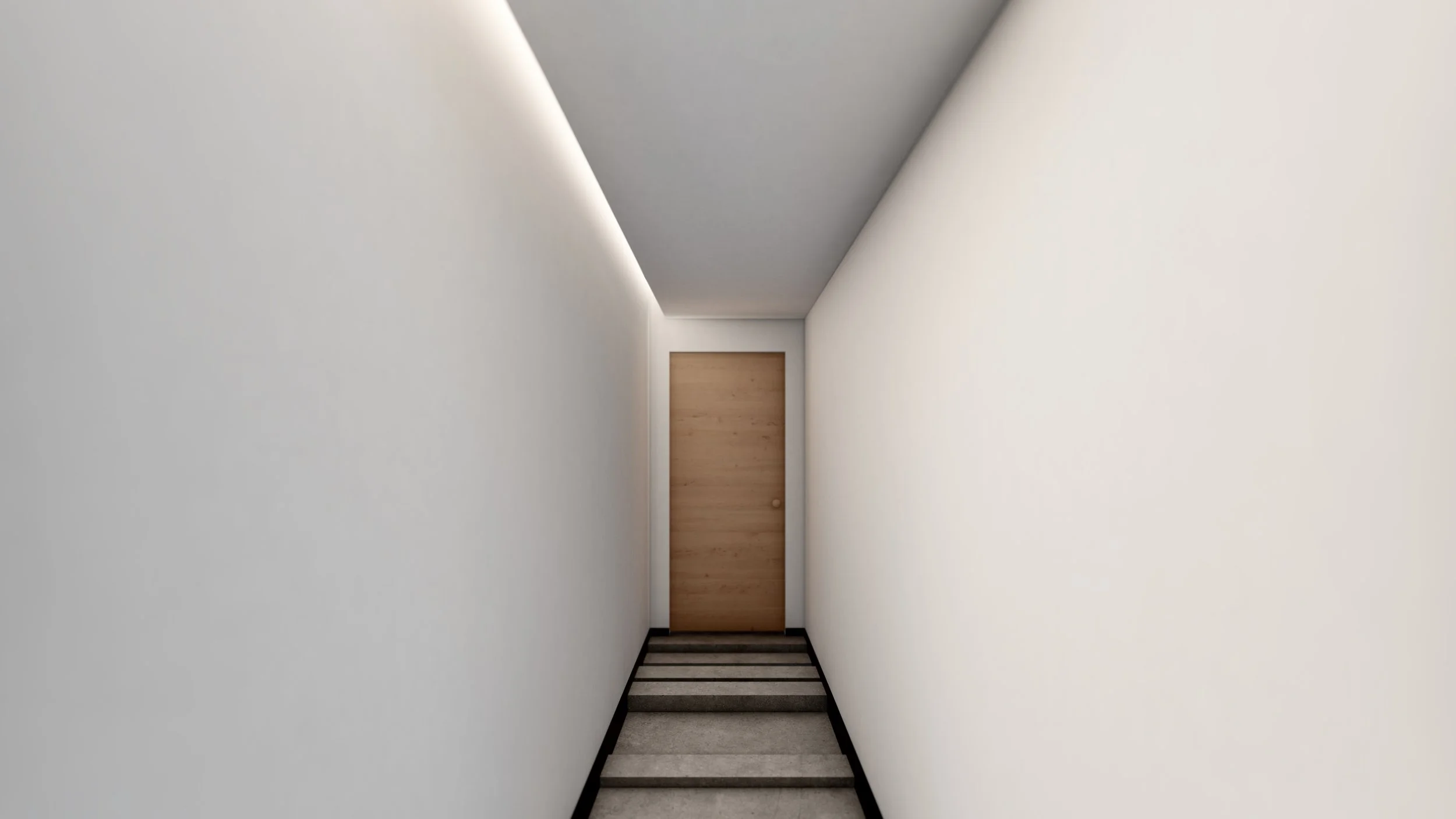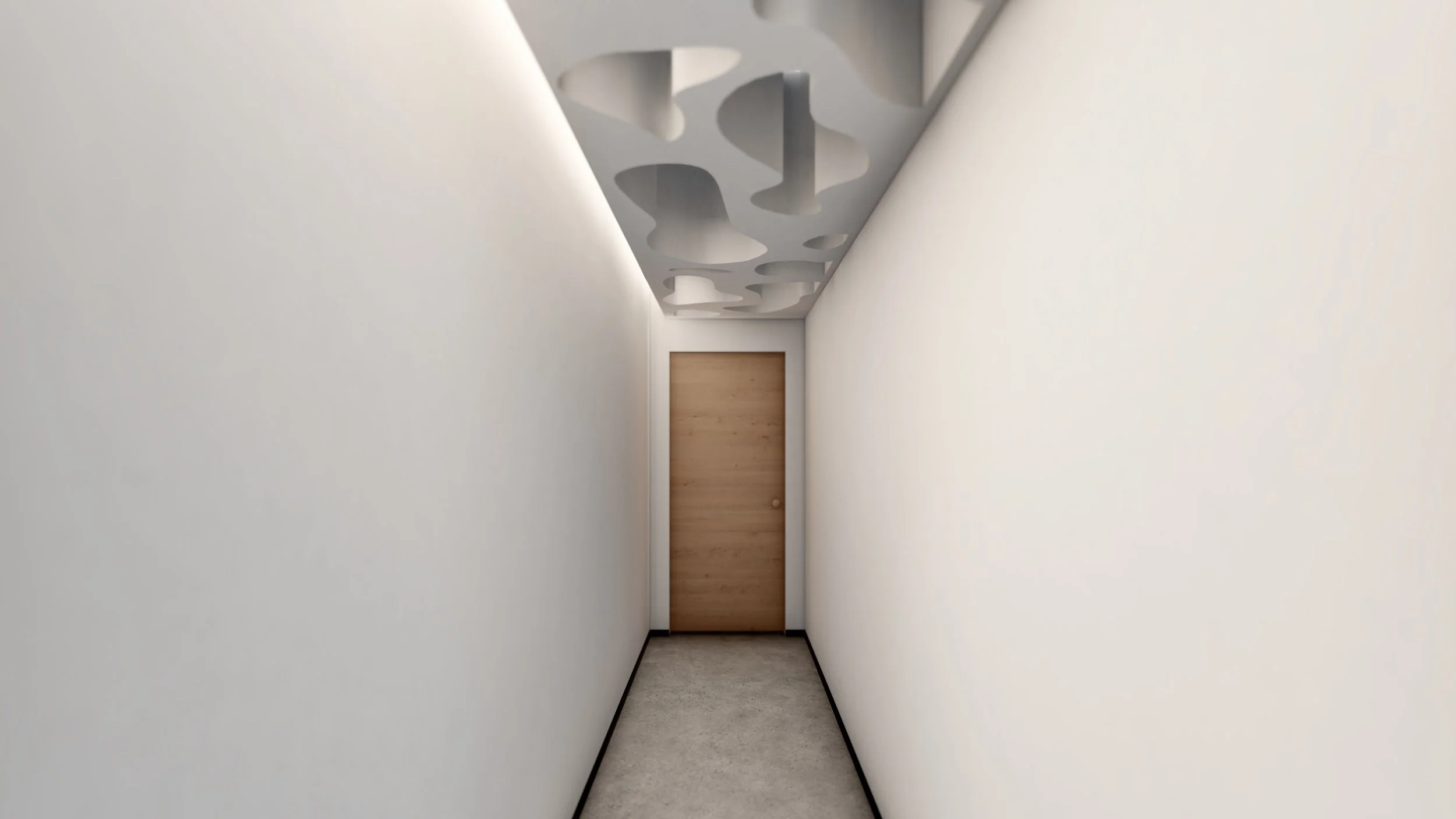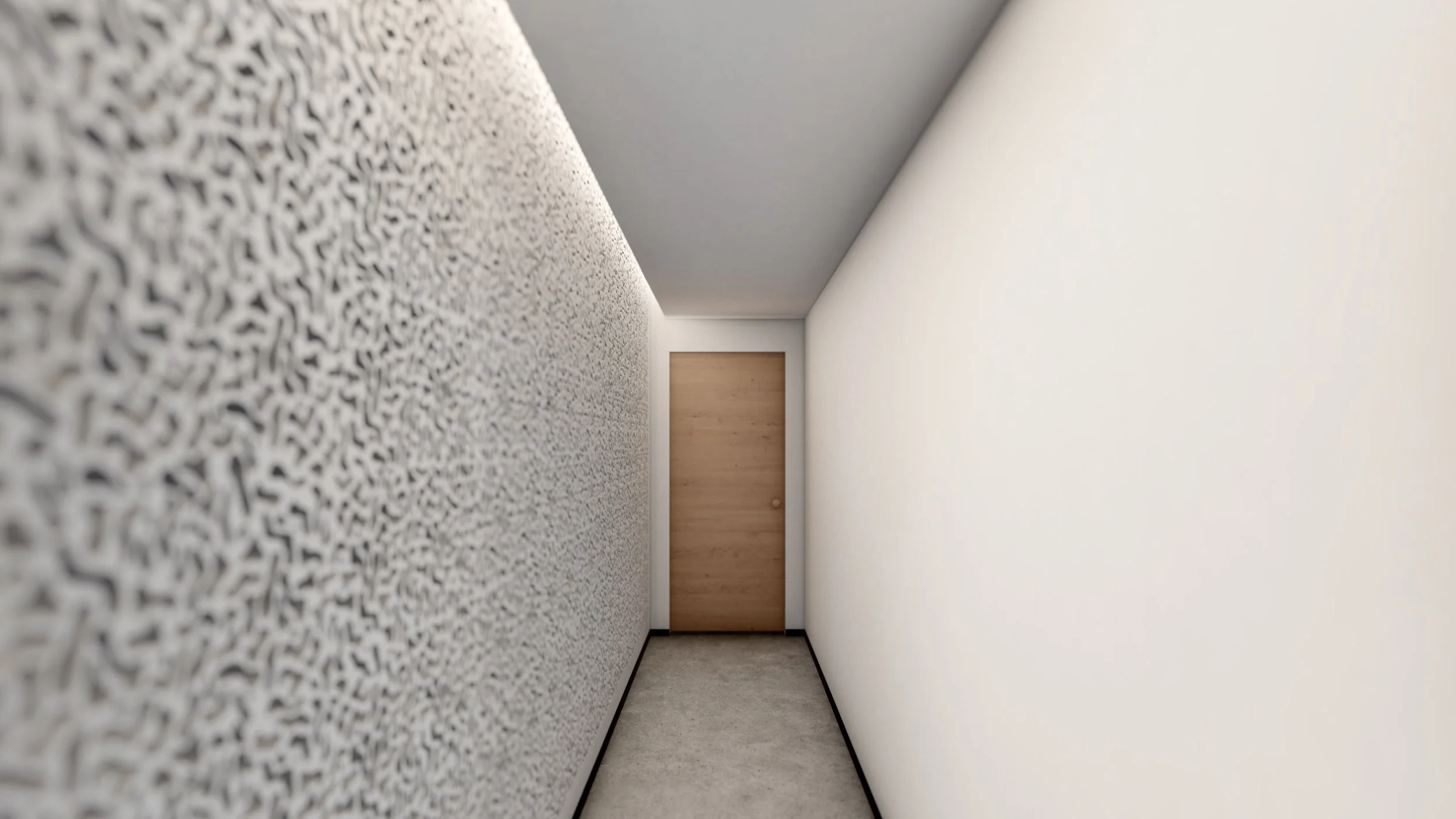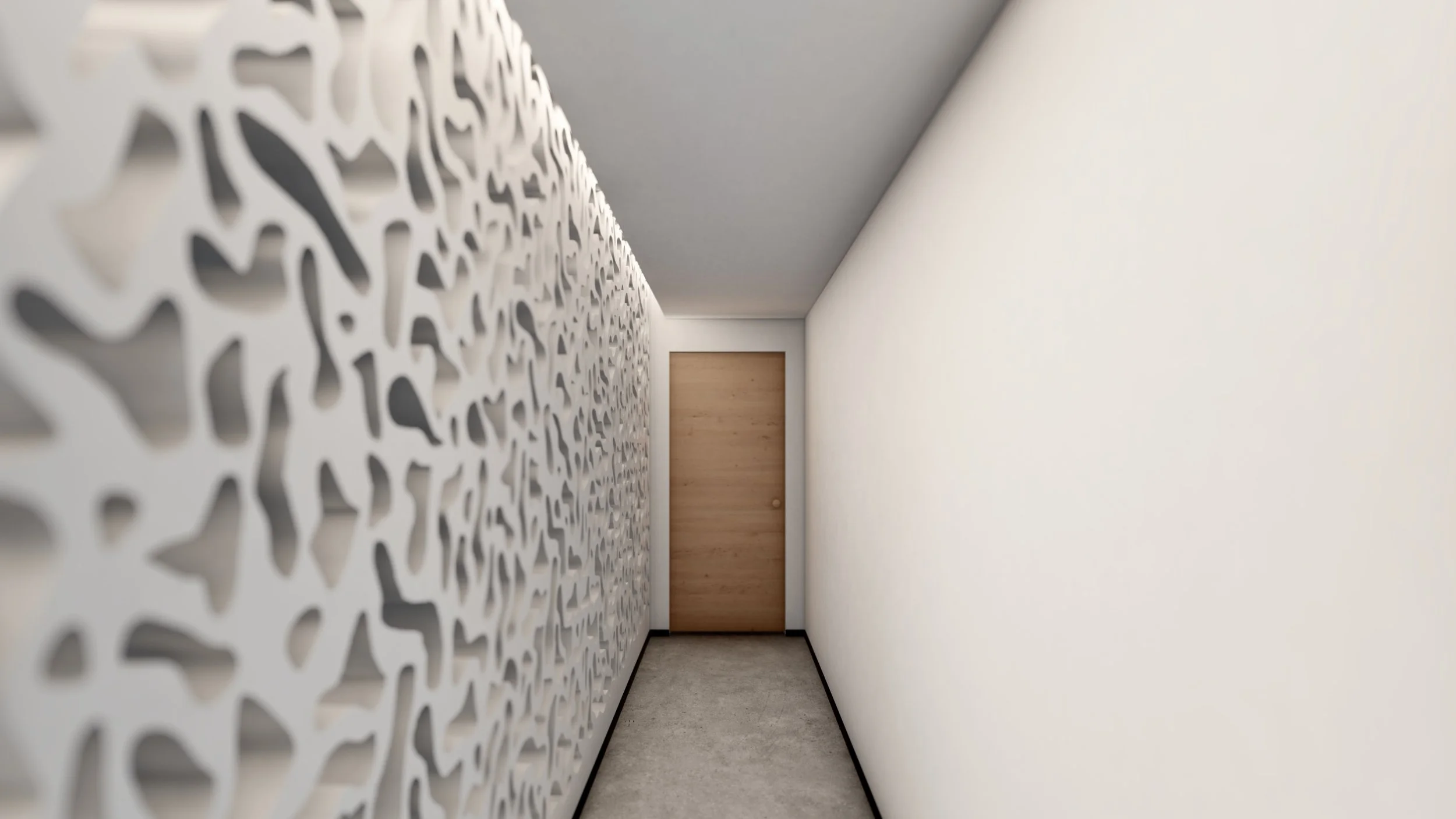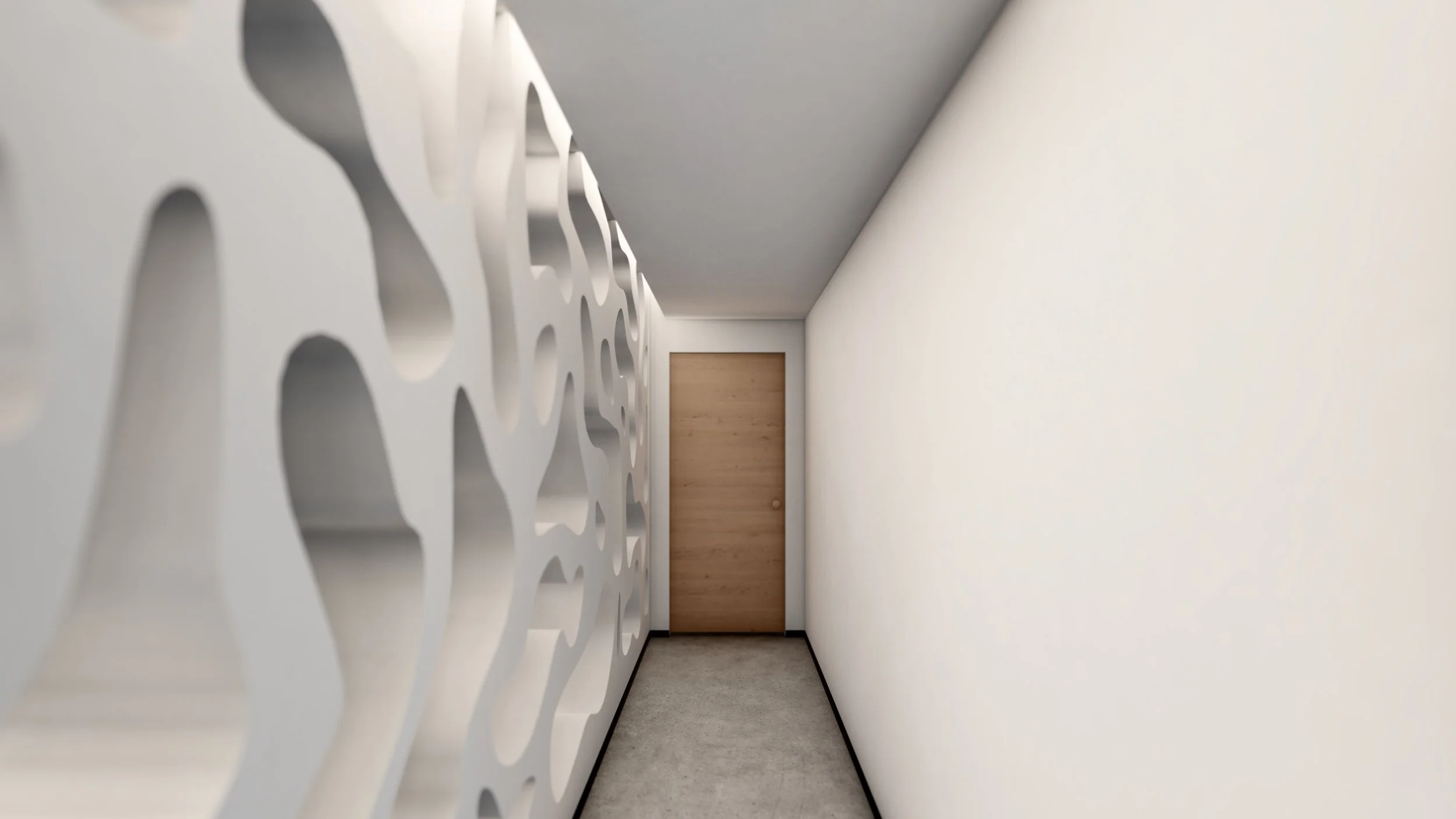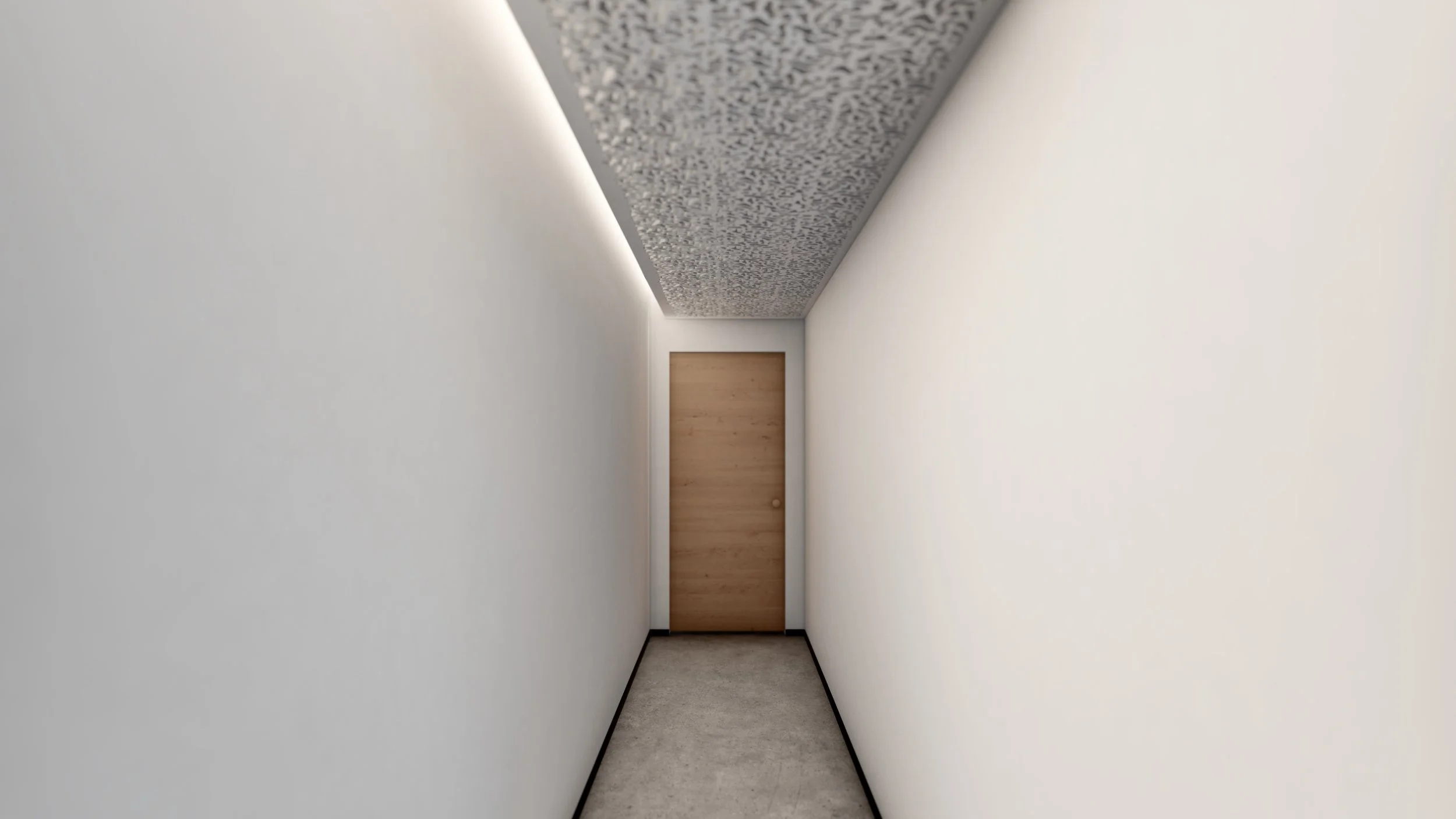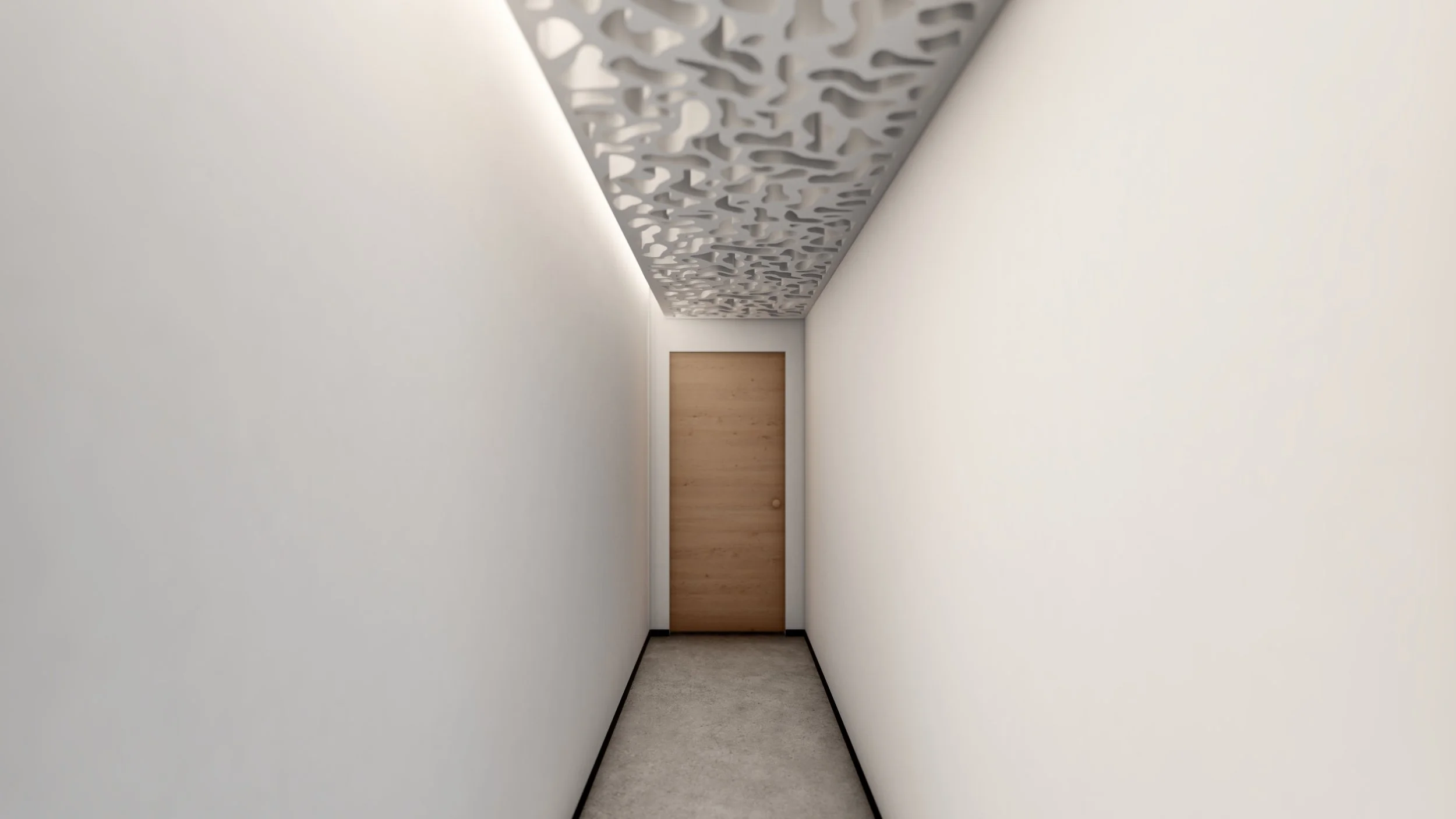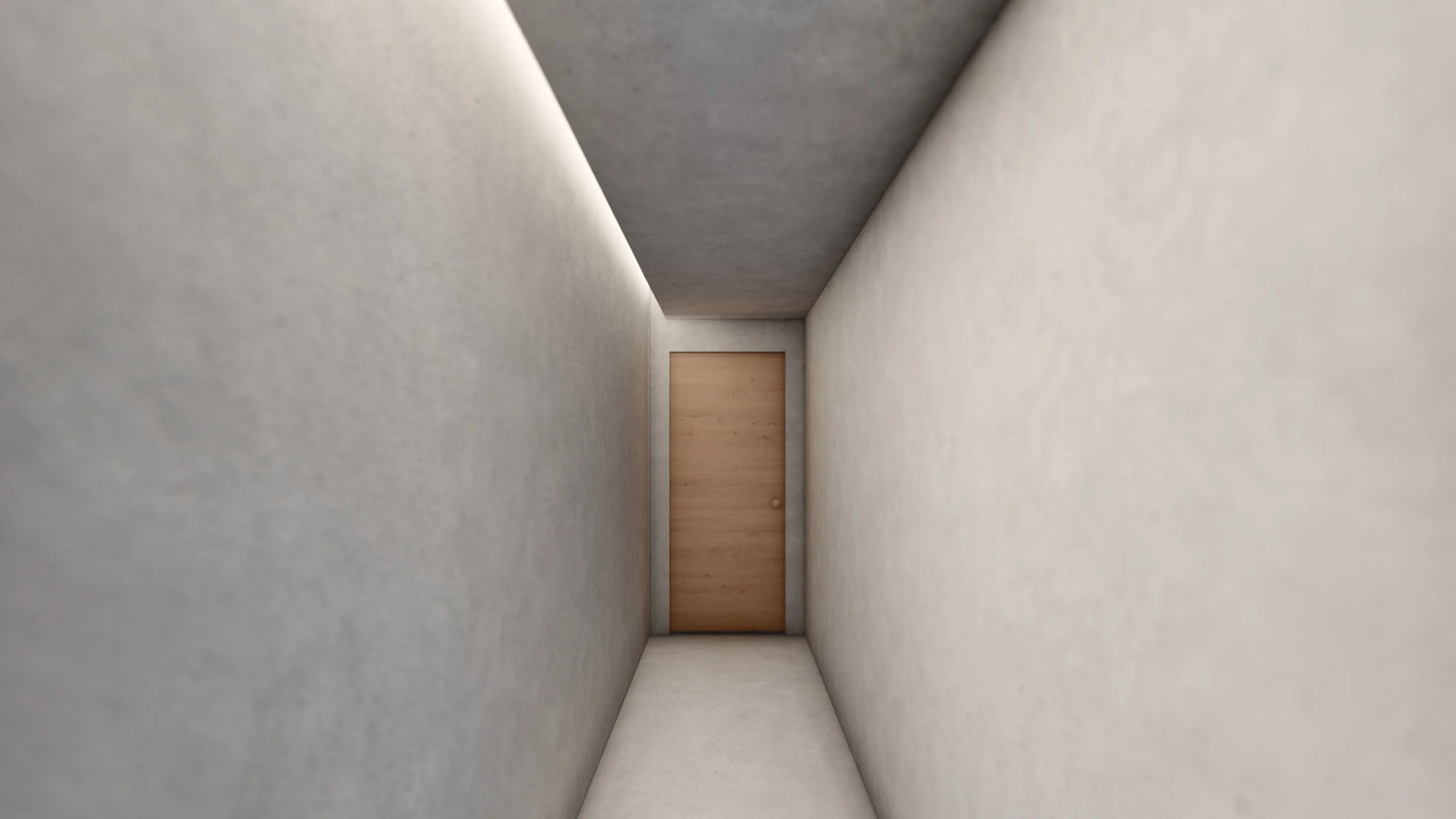Atlas
The RESONANCES project crafted ATLAS, a dATabase of visuaL Atmospheric Stimuli. It collects a series of spatial patterns born from a systematic selection of generators of atmosphere. Generators of atmosphere are architectural features designed to afford atmospheric effects (such as lights, colors, materials, and proportions) and we applied them to elementary corridors, the background environments par excellence.
We need affect-based stimuli specifically conceived to investigate architectural spaces. The reference is the International Affective Picture System (IAPS), a set of photos validated as consistently eliciting a precise emotional response (self-rated upon arousal, valence, and dominance). Within the interdisciplinary field of neuroarchitecture, similar databases are rare, and methodologies differ.
The ATLAS validation process foresees multiple steps:
a workshop of 5th-year students trained in Atmospheric Design and Phenomenography produced 66 case studies, grown from a shared baseline and altered according to 13 generators;
as experts, we rated the spaces in terms of arousal and valence (the two dimensions of core affect);
through an online survey, which involved 365 participants, we tested our hypotheses. We simulated dynamic engagement with space by editing 12-second videos of first-person-view trajectories;
we dimensioned our 3D environments to use them in virtual reality protocols, incorporating wireless gear, eye-tracking technology, and physiological sensors. The validation process is moving on to this stage.
Databases
ATLAS is a unique open-access tool that supports researchers interested in studying emotional reactions to architectural features by providing reliable, standardized, and reproducible stimuli.
ATLAS stimuli guarantee high quality-resolution and format flexibility:
2D images
12-second videos of first-person-view trajectories
3D environments explorable in virtual reality
Stimuli
Atmosphere is a complex process. Yet a scientifically controllable experimental paradigm imposes a reductionist approach, suggesting work on one design factor at a time to ensure a correlation between stimulus and response.
Our case study is the corridor spatial unit (baseline), which we altered according to 13 generators of atmosphere.
We crafted 68 stimuli:
baseline unit
G01 (generator 01) with 5 subcategories
G02 (generator 02) with 5 subcategories
G03 (generator 03) with 5 subcategories
G04 (generator 04) with 5 subcategories
G05 (generator 05) with 5 subcategories
G06 (generator 06) with 5 subcategories
G07 (generator 07) with 5 subcategories
G08 (generator 08) with 5 subcategories
G09 (generator 09) with 5 subcategories
G10 (generator 10) with 5 subcategories
G11 (generator 11) with 5 subcategories
G12 (generator 12) with 5 subcategories
G13 (generator 13) with 6 subcategories
training unit
Baseline
Generator 01
Generator 02
Generator 03
Generator 04
Generator 05
Generator 06
Generator 07
Generator 08
Generator 09
Generator 10
Generator 11
Generator 12
Generator 13
Training






